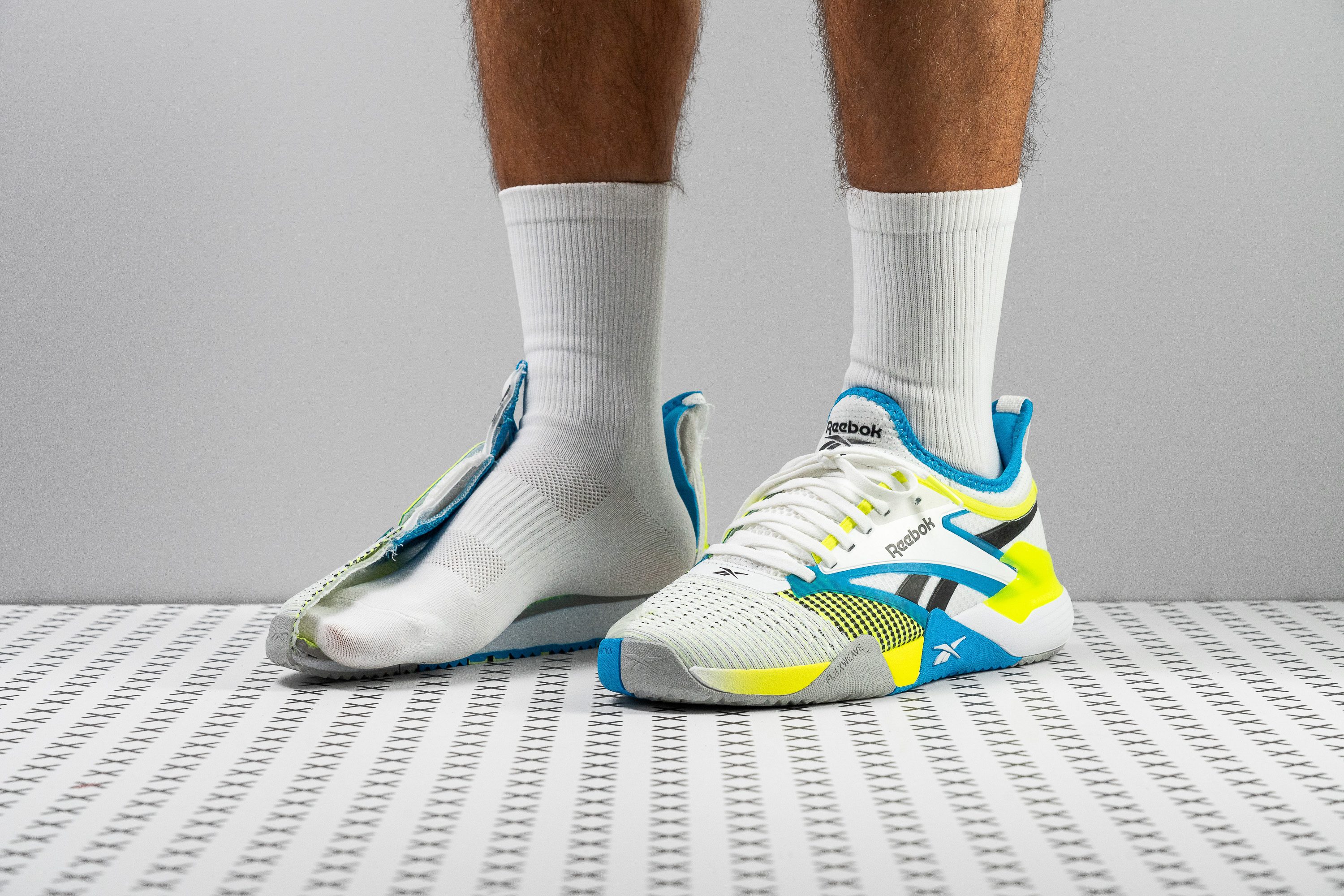Our verdict
Pros
- Fantastic grip
- Responsive Floatride cushioning
- Exceptional breathability
- Solid lateral stability
- Upper fees like one with the foot
- Ideal for narrow feet
- Can be used on and off the court
- Eye candy
Cons
- Poor abrasion-resistance and durabilty
- Too drastic heel-to-toe drop
- Not for wide feet (stay away!)
- Not for baseline players
Audience verdict
Comparison
The most similar tennis shoes compared
+ + Add a shoe | |||||
|---|---|---|---|---|---|
| Audience score | 86 Great! | 86 Great! | 78 Good! | 89 Great! | |
| Price | $120 | $120 | $80 | $140 | |
| Shoe type | All Court | All CourtHard Court | All CourtHard Court | All CourtHard Court | |
| Shock absorption | High | High | Low | Moderate | |
| Energy return | High | Low | Moderate | High | |
| Traction | Moderate | Moderate | High | Moderate | |
| Construction | Speed | Speed | Stability | Speed | |
| Breathability | Breathable | Moderate | Breathable | Moderate | |
| Weight lab | 13.6 oz / 386g | 12.2 oz / 347g | 11.3 oz / 319g | 11.7 oz / 332g | |
| Lightweight | ✗ | ✓ | ✓ | ✓ | |
| Drop lab | 14.7 mm | 11.8 mm | 10.2 mm | 10.7 mm | |
| Width / fit | Wide | Medium | Medium | Medium | |
| Toebox width | Medium | Medium | Medium | Medium | |
| Size | Slightly small | True to size | Slightly small | Slightly small | |
| Midsole softness | Balanced | Balanced | Balanced | Firm | |
| Stiffness | Flexible | Flexible | Flexible | Flexible | |
| Torsional rigidity | Moderate | Moderate | Moderate | Moderate | |
| Heel counter stiffness | Moderate | Moderate | Flexible | Stiff | |
| Midsole width - forefoot | Narrow | Average | Narrow | Very narrow | |
| Midsole width - heel | Narrow | Average | Narrow | Very narrow | |
| Outsole durability | Bad | Good | Decent | Bad | |
| Heel padding durability | Decent | Good | Bad | Good | |
| Heel stack lab | 30.8 mm | 28.8 mm | 28.6 mm | 30.2 mm | |
| Forefoot | 16.1 mm | 17.0 mm | 18.4 mm | 19.5 mm | |
| Insole thickness | Thick | Thick | Average | Average | |
| Removable insole | ✓ | ✓ | ✓ | ✓ | |
| Heel tab | Finger loop | Extended heel collar | None | Extended heel collar | |
| Toebox durability | Decent | Good | Bad | Good | |
| Outsole hardness | Hard | Average | Average | Average | |
| Outsole thickness | Average | Thin | Average | Very thin | |
| Ranking | #17 Top 44% | #16 Top 42% | #33 Bottom 15% | #8 Top 21% | |
| Popularity | #29 Bottom 25% | #22 Bottom 43% | #14 Top 36% | #7 Top 18% |
Who should buy
Here is the profile of a player who, in our opinion, will get the most out of the Reebok Nano Court:
- a non-professional racquet sports player who occasionally enjoys a game of tennis, pickleball, padel, racquetball, or badminton
- someone who primarily plays indoors
- a person with narrow-to-medium feet
- an all-court player who doesn't need a highly stable shoe
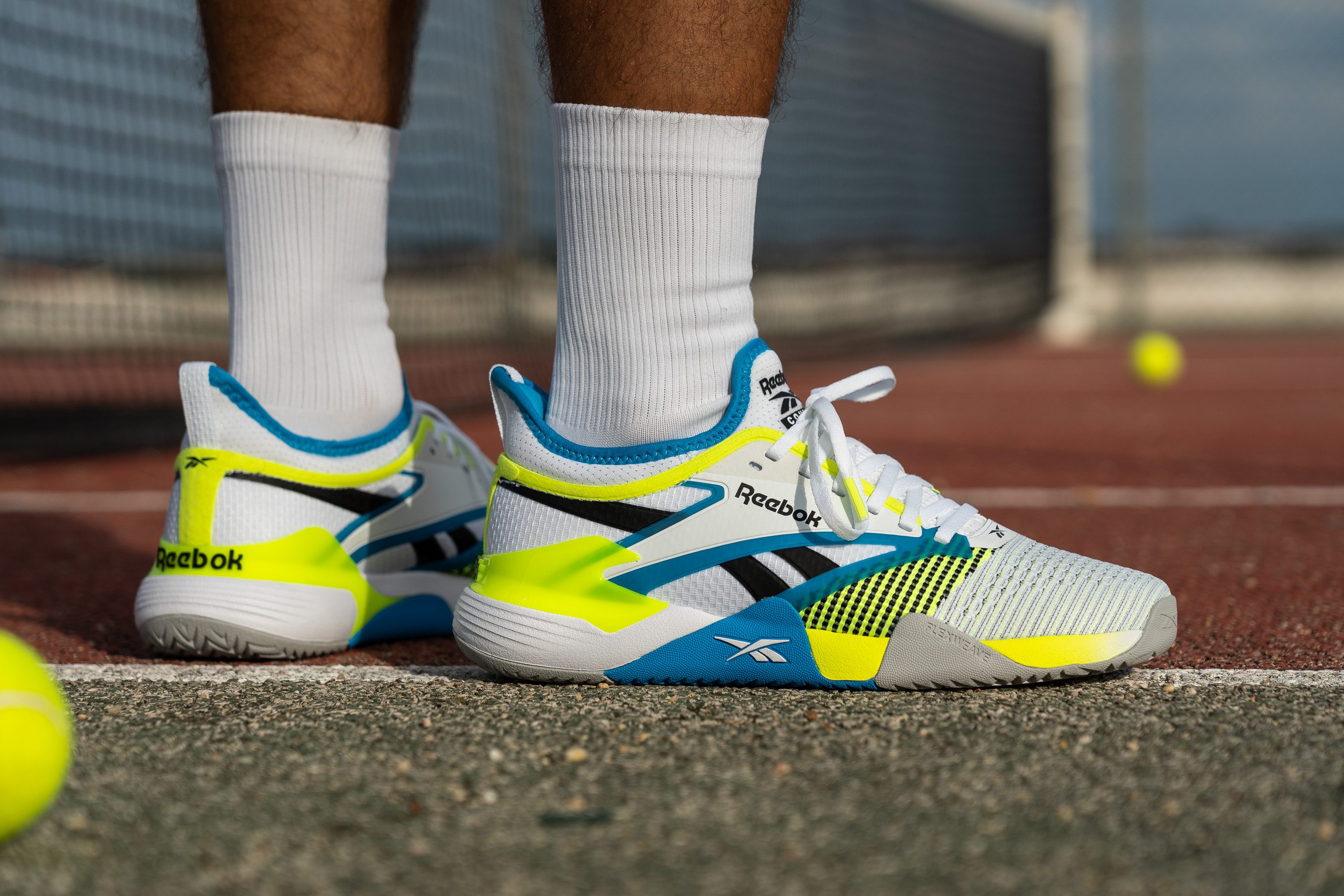
Who should NOT buy
We found a few valid reasons why the Nano Court may not be a great tennis shoe for some players.
Here are the reasons as well as the alternative shoes to consider:
- you have wide and/or flat feet: K-Swiss Hypercourt Express 2 (also more durable)
- you are a baseline player: ASICS Gel Challenger 14 or ASICS Gel Resolution 9 (MUCH more durable)
All of these shoes also have a moderate heel-to-toe drop that won't push your feet forward as much as the 14.7 mm drop of the Nano Court!
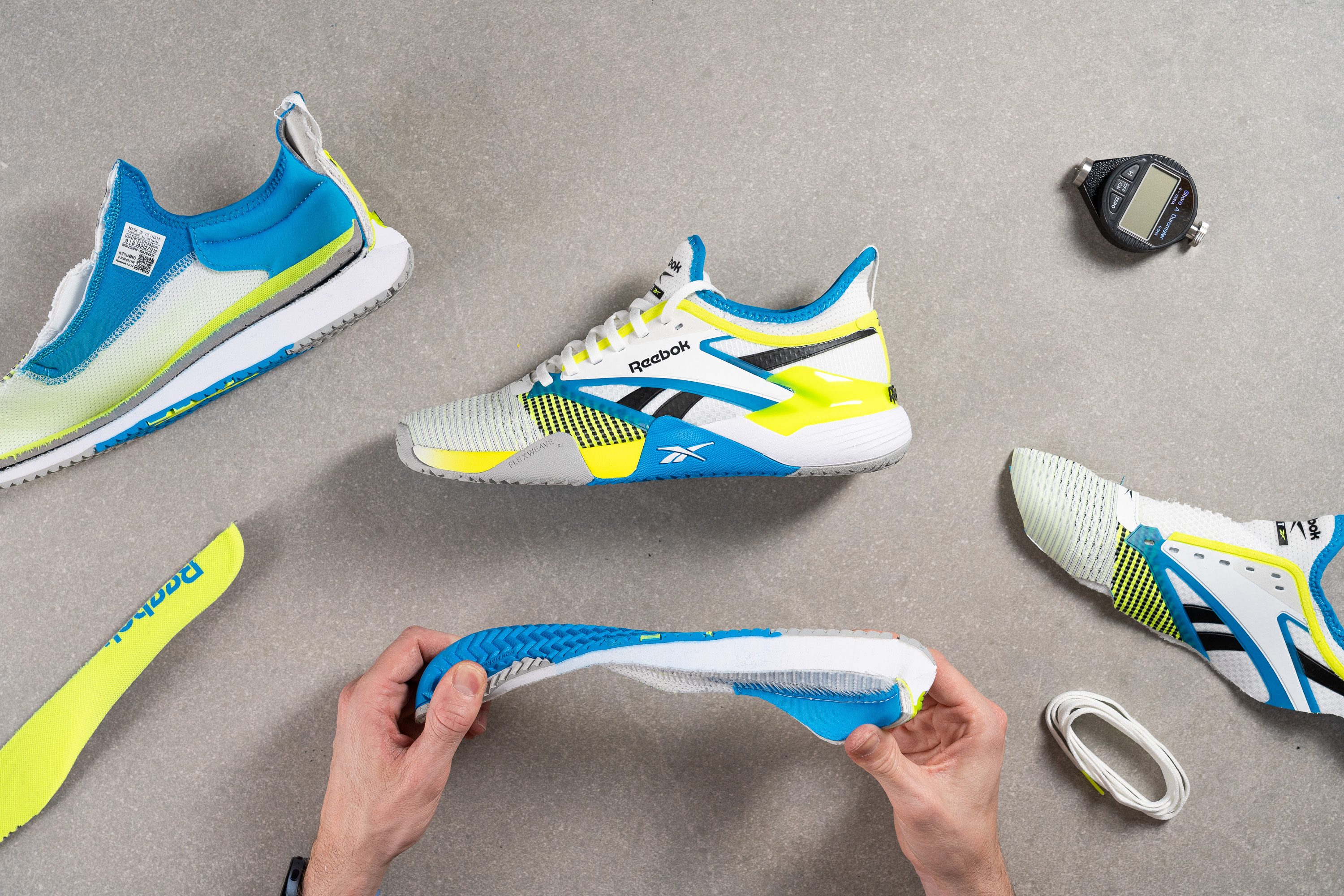
Cushioning
Shock absorption
The Nano Court's drastic difference in the heel and forefoot stack heights is reflected in its contrasting shock absorption measurements as well.
The shoe's heel reading (109 SA) is nearly twice as high as the forefoot one (56 SA), offering significantly more cushioning in the rearfoot and a pronounced court feel under the toes.
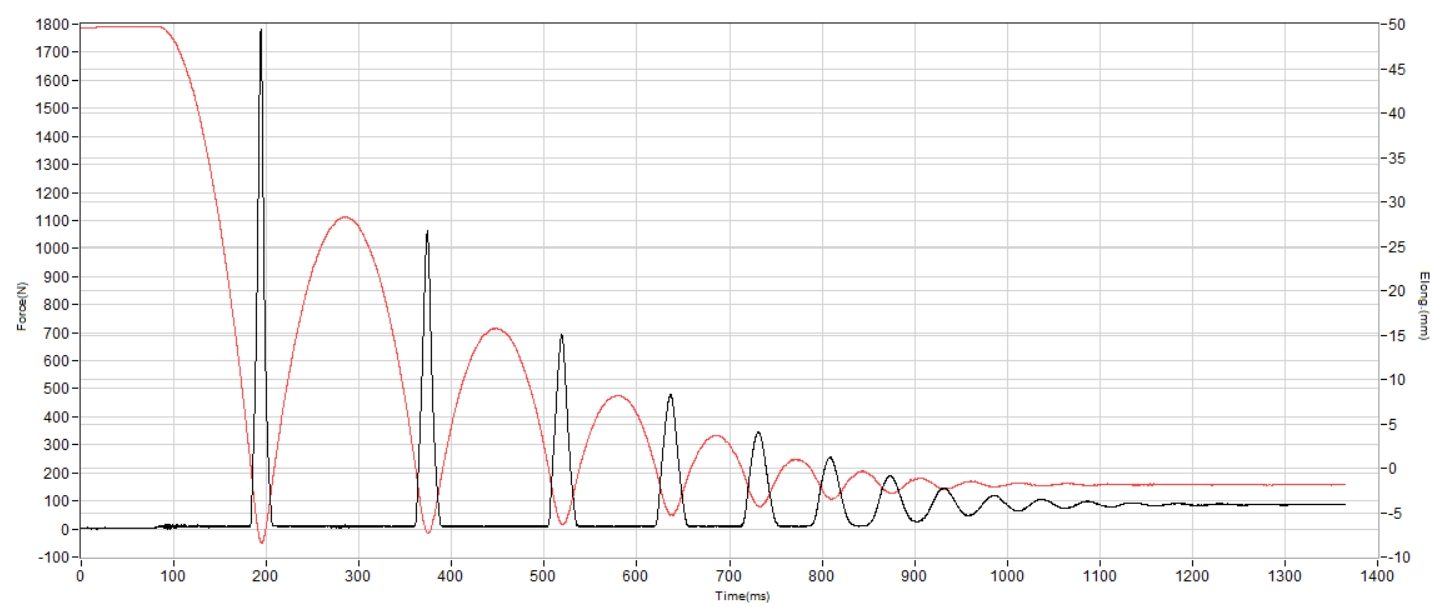
| Nano Court | 109 SA |
| Average | 99 SA |
Energy return
This Reebok shoe also turned out to be quite propulsive, with an above-average energy return in both the heel (59.6%) and in the forefoot (61%).
This responsiveness reduced our effort during sprints and jumps, making the ride feel quite charged.
| Nano Court | 59.6% |
| Average | 48.8% |
Heel stack
Loaded with a good amount of midsole foam, this Reebok shoe returned a stack height of 30.8 mm.
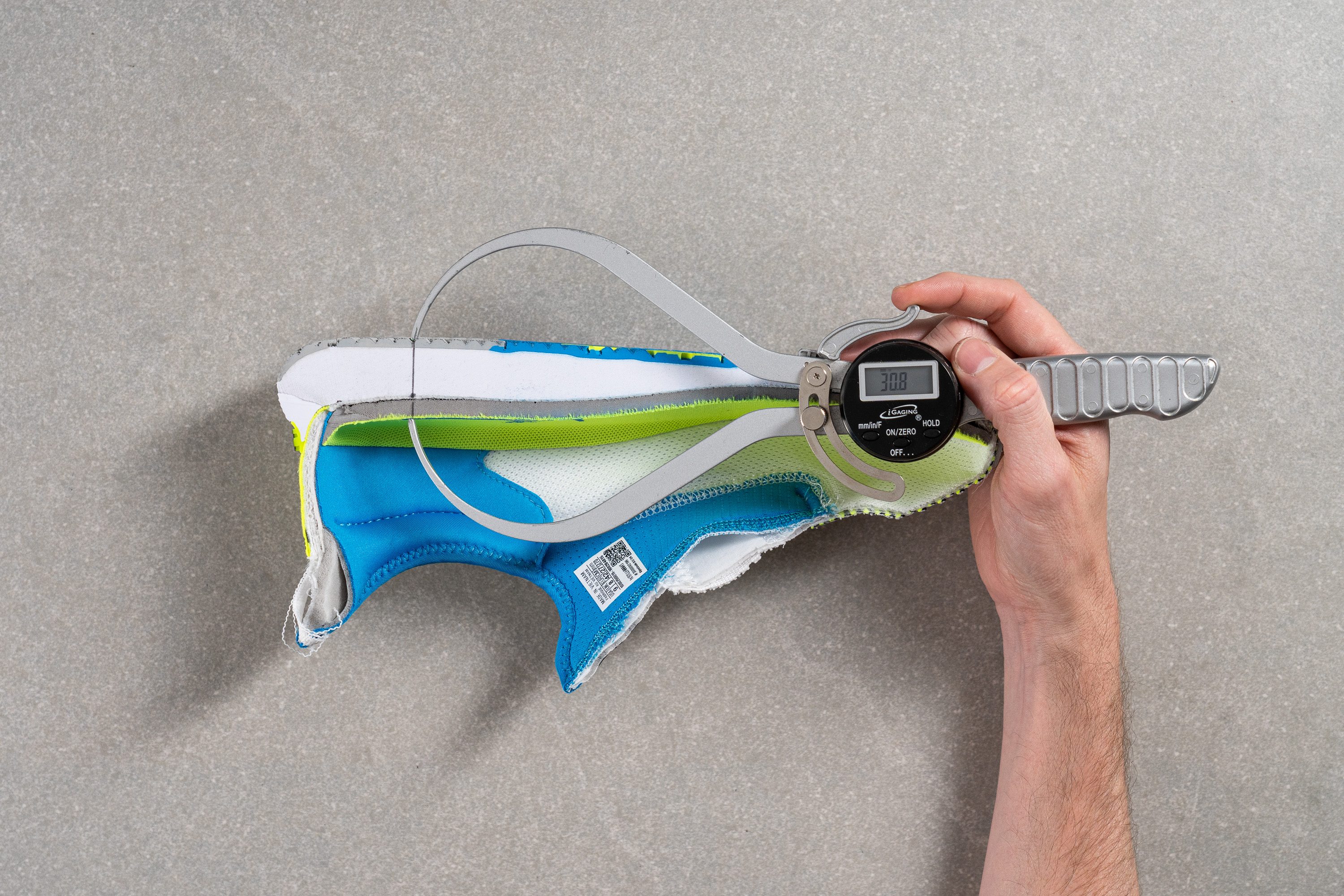
It is on the cushier side of our tennis shoe range offering plenty of impact protection in the heel.
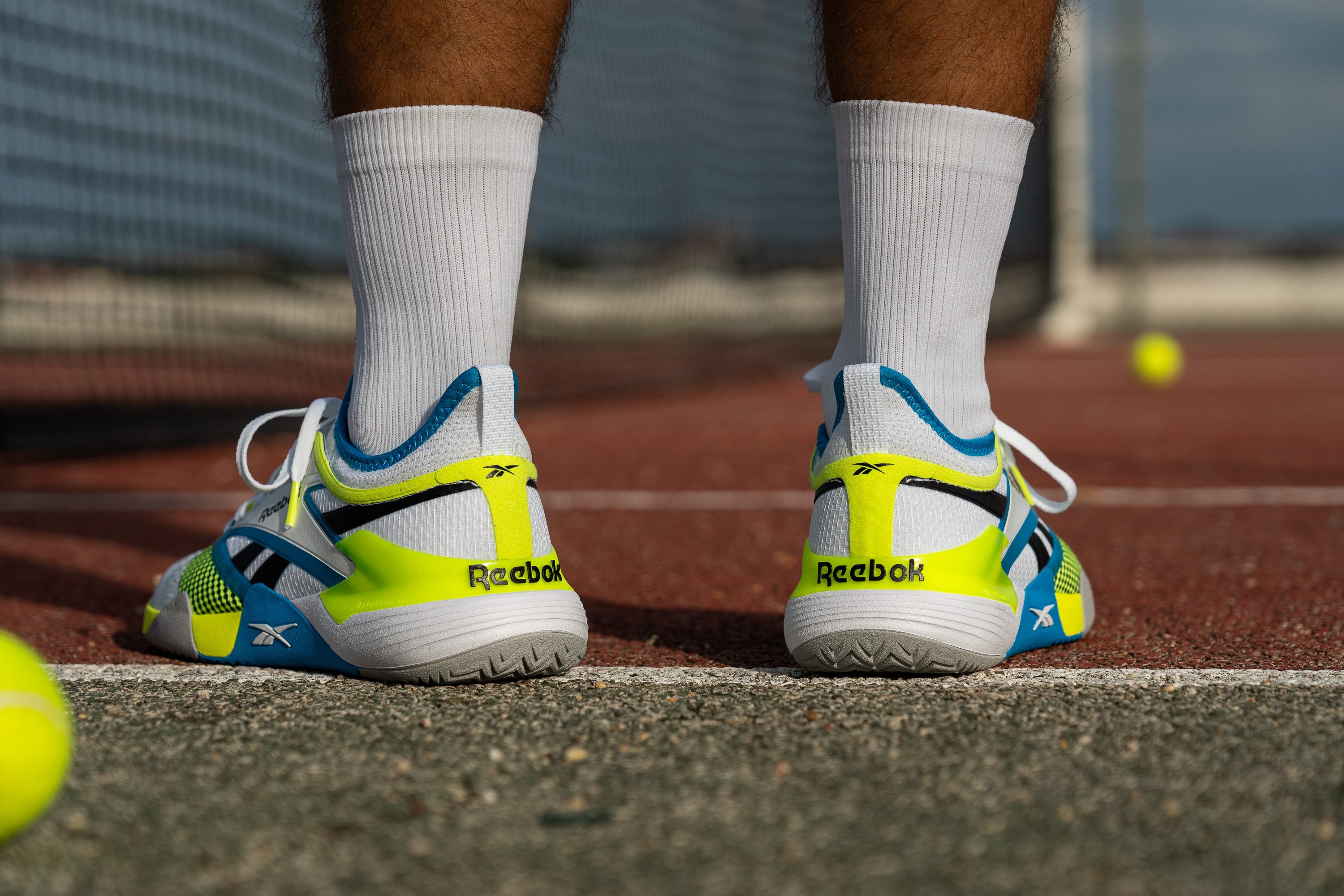
| Nano Court | 30.8 mm |
| Average | 29.2 mm |
Forefoot stack
But this is where it gets tricky...
The forefoot of the Nano Court showed a mere 16.1 mm of stack height! That's the lowest we've ever recorded among the tennis shoes in our lab!
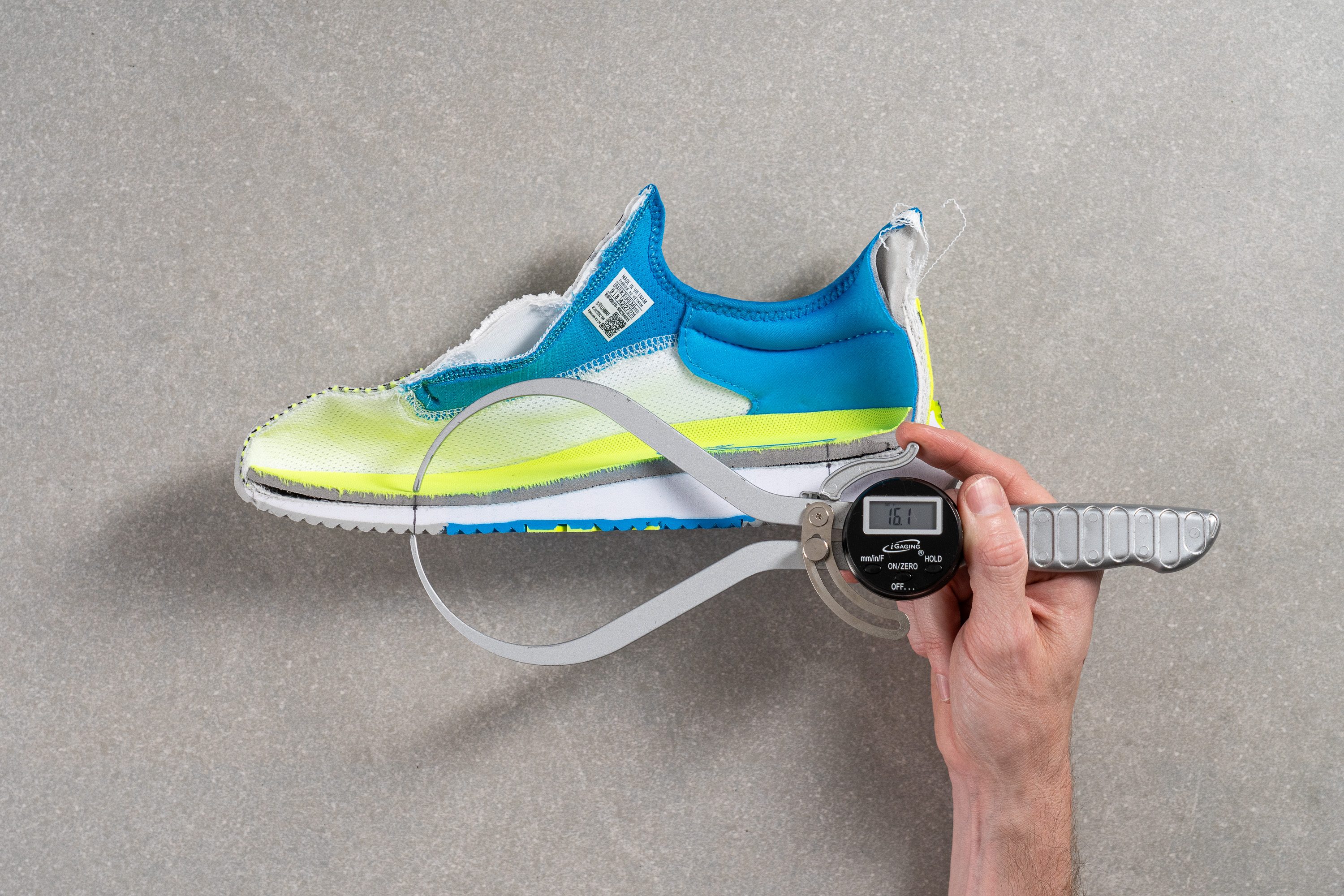
Obviously, the court feel is very pronounced in this setup but why go so low? The balls of our feet certainly felt the impact of pounding on the court after a longer session.
We believe that a few extra millimeters of foam would provide the necessary cushioning without compromising the ground feedback.
| Nano Court | 16.1 mm |
| Average | 19.5 mm |
Drop
The brand's choice of such a drastic heel-to-toe drop in the Reebok Nano Court left us puzzled.
Sure, it is common for tennis shoes to have a higher drop to support the forward-leaning motion involved in the sport. But it typically hovers around 10 mm... And the Nano Court raised it to 14 mm!
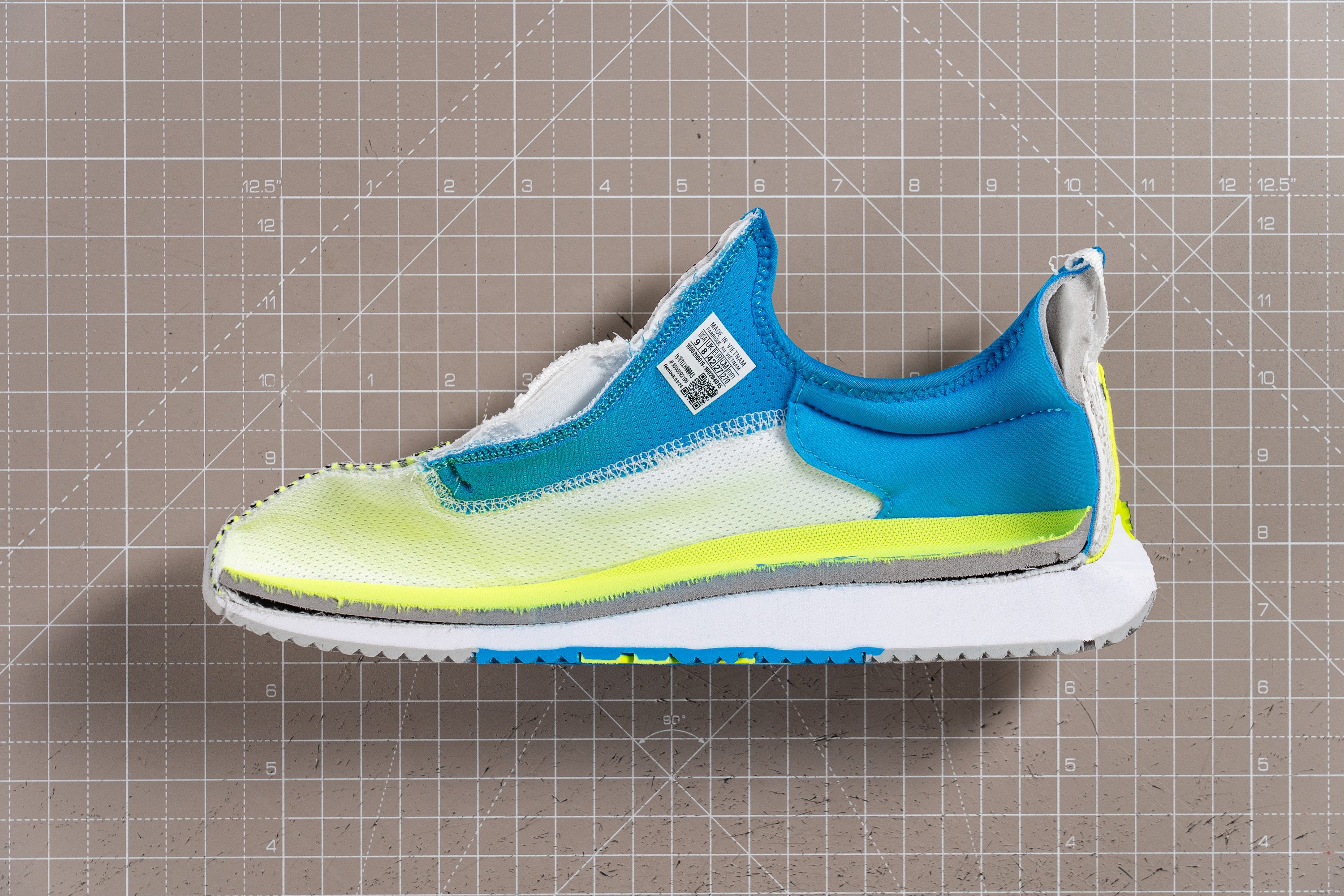
In our opinion, this could do more harm than good as most players are used to having 8-10 mm of heel elevation, and 14.7 mm can definitely feel like too much.
We think that a more moderate drop would accommodate more athletes and would minimize the chance of toe jamming and heel slippage, among other inconveniences.
| Nano Court | 14.7 mm |
| Average | 9.7 mm |
Midsole softness
On the other hand, we were elated by the use of the Floatride cushioning in the Reebok Nano Court. This TPU-based foam is far from plush but it offers a very lively bounce instead.
According to our Shore A durometer, the Floatride is actually not much firmer than the average. At 29.9 HA, it sits right in the middle of the tennis shoe foams.
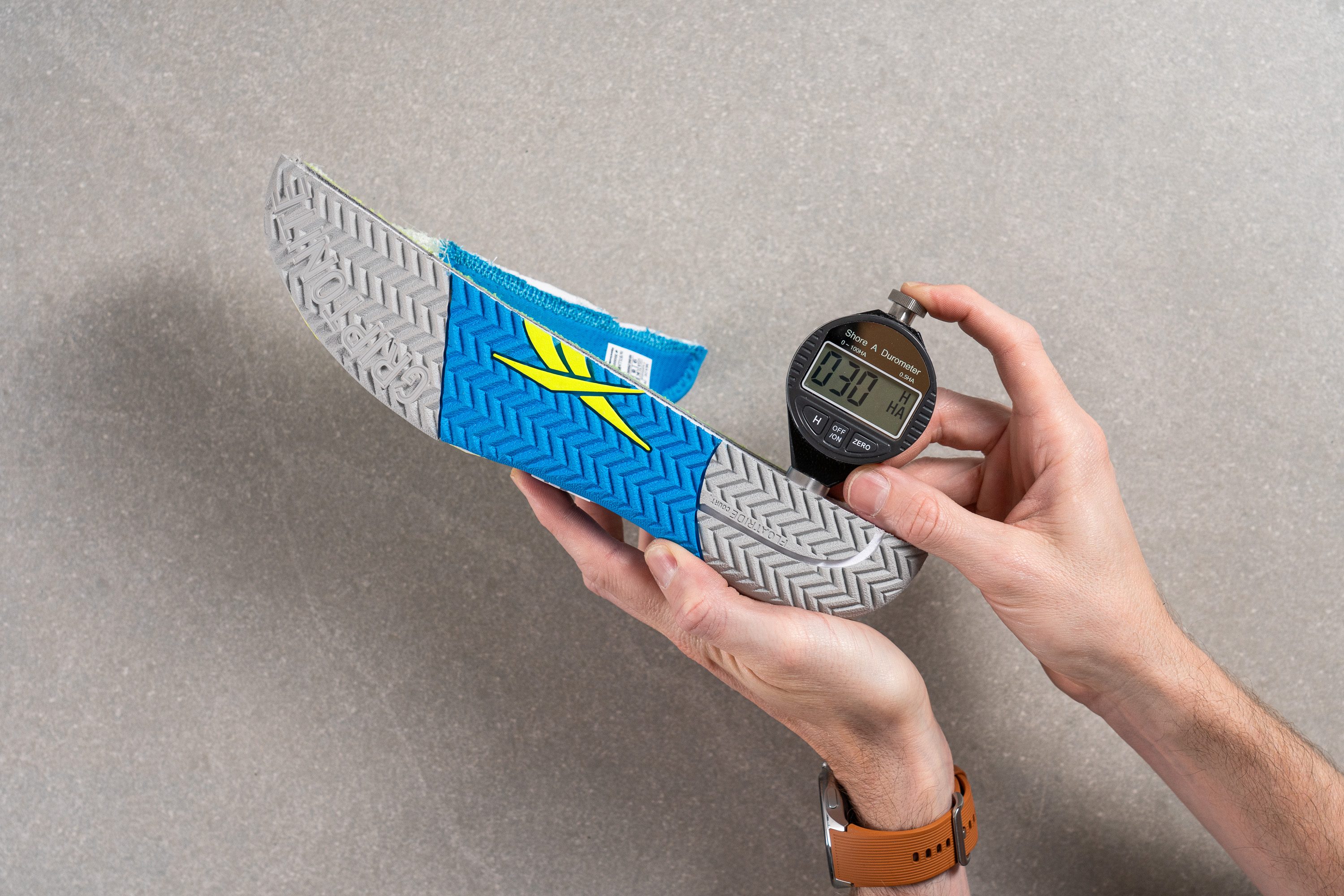
We thoroughly enjoyed bouncing back from the shots with this responsive setup. But unfortunately, our take-offs didn't feel as charged because the shoe's really thin forefoot stack and flexible forefoot didn't let the Floatride reveal its full potential.
| Nano Court | 29.9 HA |
| Average | 28.1 HA |
Size and fit
Size
Reebok Nano Court fits slightly small (18 votes).
Toebox width - widest part
Unfortunately, our toebox measurements are slightly distorted by the shoe's external overlays and show as much as 102.3 mm in the widest part of the forefoot.
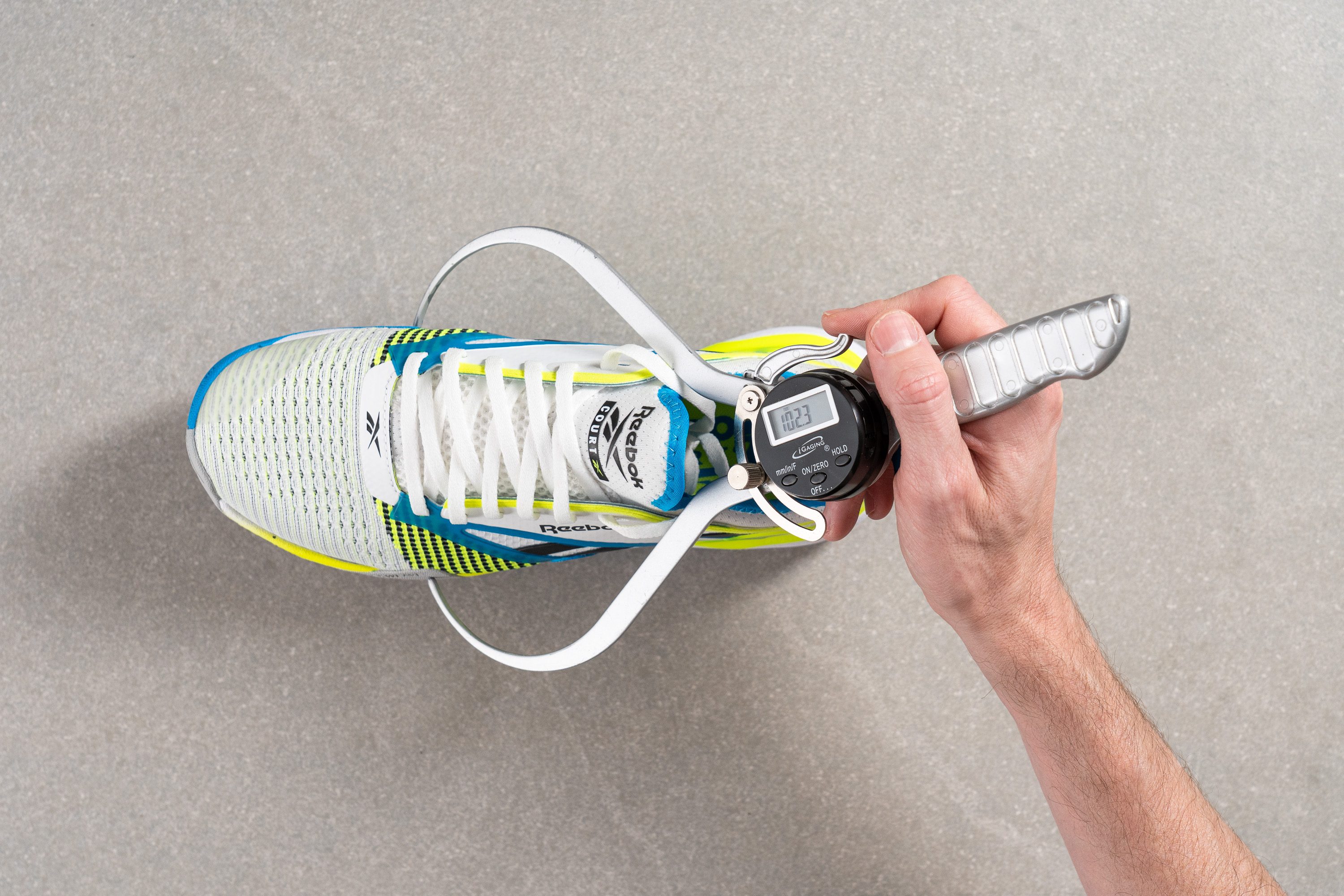
Please take this number with a grain of salt as our medium-width feet felt borderline snug in the Reebok Nano Court.

We are sure that a wide-footed athlete would feel constricted in this Reebok shoe. So, we would highly recommend the K-Swiss Hypercourt Express 2 to these folks instead.
This test follows an older methodology, which is why you don't see recently tested shoes in the chart. Results from different methodologies can not be compared.
| Nano Court | 102.3 mm |
| Average | 101.0 mm |
Toebox width - big toe
Even though the toebox width at the big toe showed an average measurement of 77.2 mm, it didn't seem to make the Nano Court a more accommodating shoe.
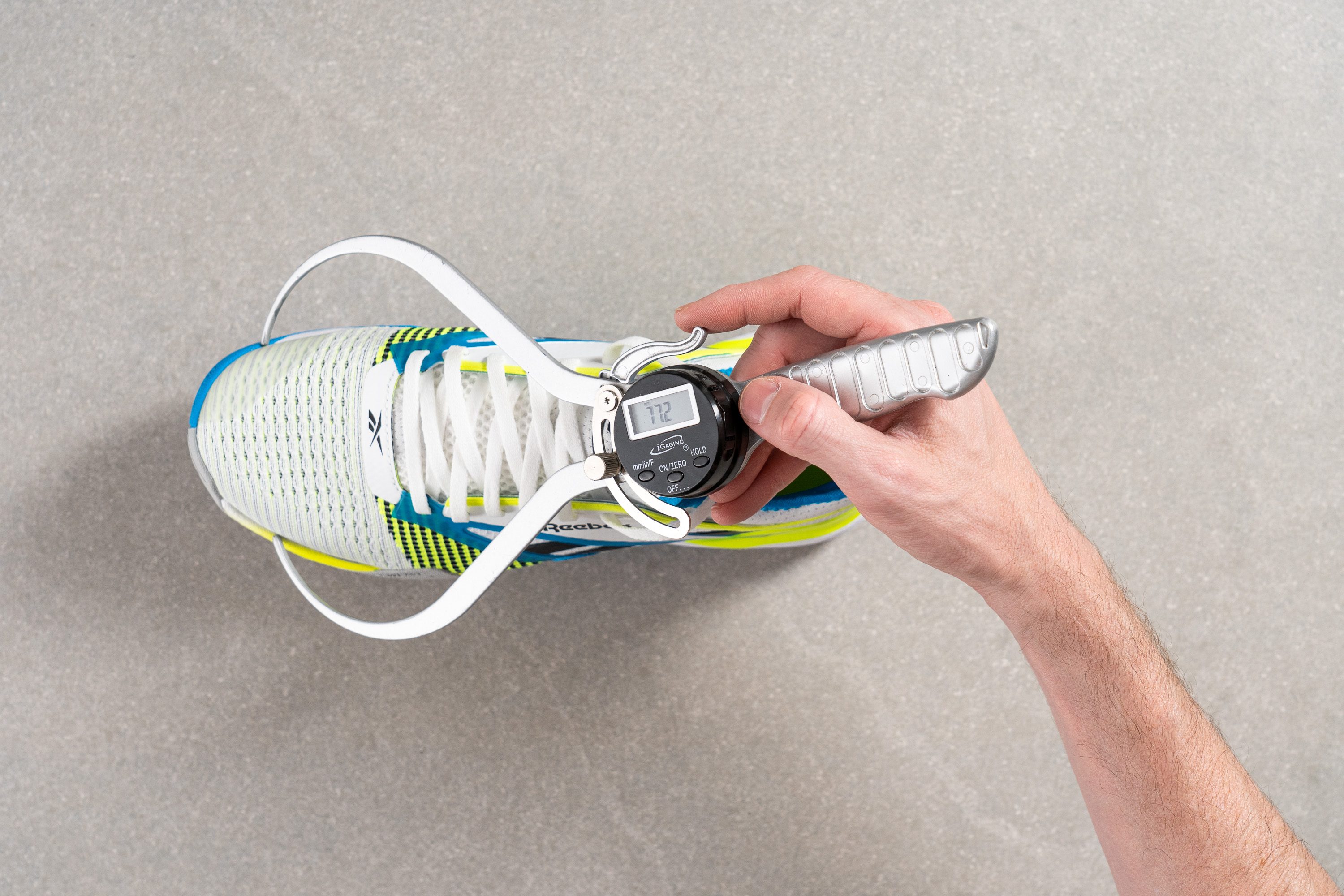
This test follows an older methodology, which is why you don't see recently tested shoes in the chart. Results from different methodologies can not be compared.
| Nano Court | 77.2 mm |
| Average | 76.9 mm |
Traction / Grip
Forefoot traction
Having poured a lot of critique on the Reebok Nano Court, we are happy to finally talk about its positives. And that would be the outsole grip.
Measuring the shoe's forefoot grip at 0.79, we found that it offered a tacky bite, allowing us to effortlessly stop on a dime and push off with maximum force.
| Nano Court | 0.79 |
| Average | 0.76 |
Outsole design
Its Griptonite outsole happens to be softer than average and has a very pronounced texture in addition to the herringbone pattern.
If only Reebok found a way to improve this rubber's durability, we are sure that it would become a great success on the tennis shoe market.
Flexibility / Stiffness
The Reebok Nano Court felt rather flexible straight from the box.
Its pliability also reflected in our shoe flexing machine which showed that the Nano Court needed only 13.7N to bend by 30 degrees. That is notably less than it takes a typical tennis shoe.
Because of that, this Reebok shoe offered a rather natural and grounded underfoot experience during the playtest but, on the other hand, we lacked the snap needed for explosive takeoffs.
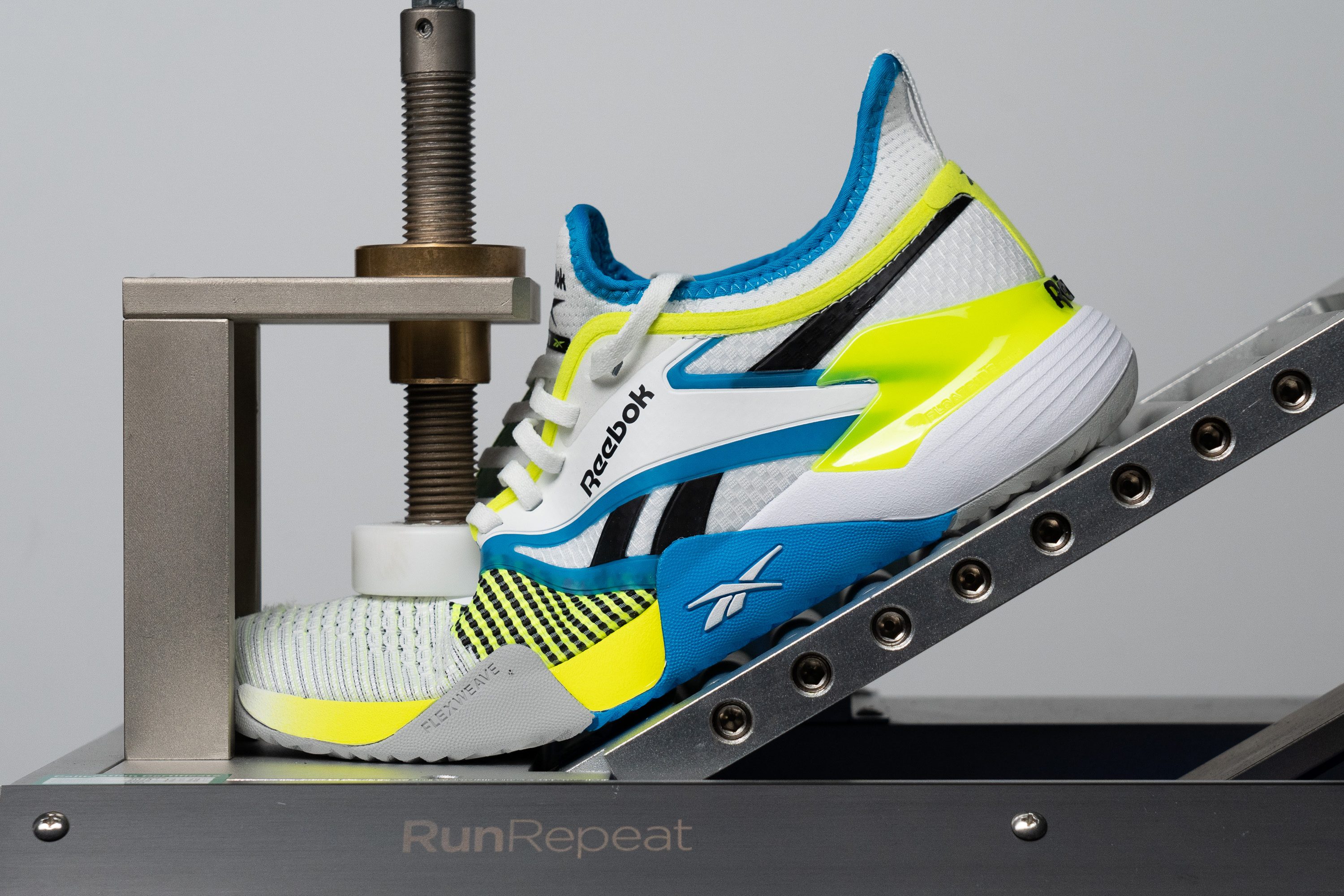
| Nano Court | 13.7N |
| Average | 16.6N |
Weight
On foot, the weight of the Reebok Nano Court felt just right and never dragged our feet down. That's why we were surprised to see an above-average weight of 13.6 oz (385g) in a men's US 9.
| Nano Court | 13.6 oz (386g) |
| Average | 12.8 oz (362g) |
Breathability
The Flexweave upper of the Reebok Nano Court showed absolute class in breathability! It effortlessly expelled all the smoke we pumped into the shoe in our breathability test below.
Examining the Flexweave more closely through a microscope, we could see how large its pores actually are!

It features very thin but strong strings to wrap around the thicker weaves to form wide spaces between the threads.
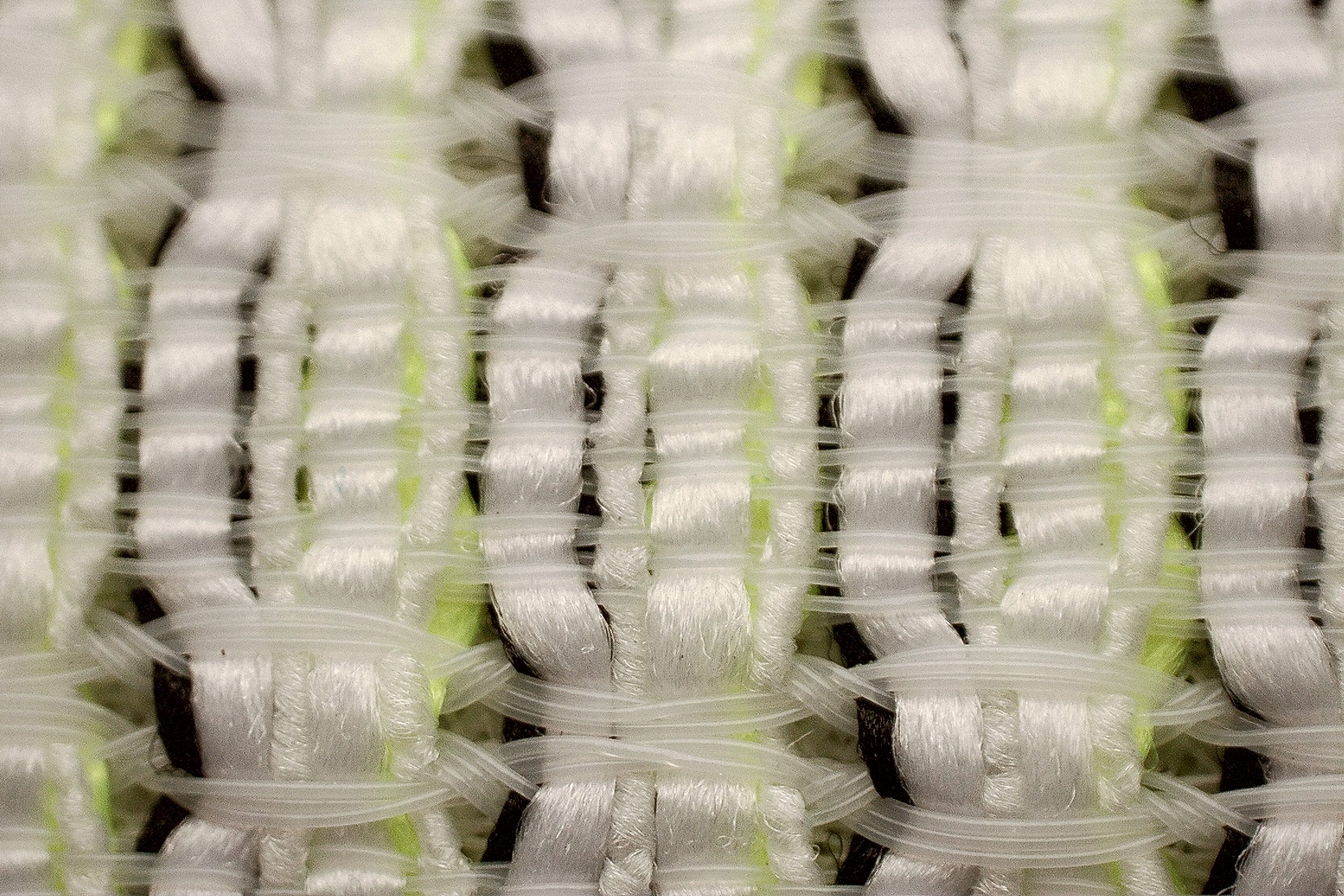
And as our transparency test shows, it's not just the shoe's toebox that boasts fantastic ventilation. The tongue and the vamp are also made of a very porous and airy fabric.
With all these findings, we can confidently state that the Reebok Nano Court can keep the feet very well aerated no matter how hot and sweaty your court session gets!
We happily give it the highest breathability score of 5.
| Nano Court | 5 |
| Average | 3.2 |
Stability
Lateral stability test
Having tested the side-to-side stability of the Reebok Nano Court, we would describe it as solid. It's not on the same level as the Adidas Barricade or the ASICS Gel Resolution but it is just right for most players whose playing style involves moving around the entire court.
Reebok added a whole bunch of stabilizing components throughout the shoe:
- the Rubber Aid flanges (blue and grey rubber protruding upwards)
- the non-stretch yarn (the checkerboard pattern in the forefoot)
- the thick synthetic saddle (with the Reebok logo)
- the TPU heel clip (yellow, around the heel), etc.
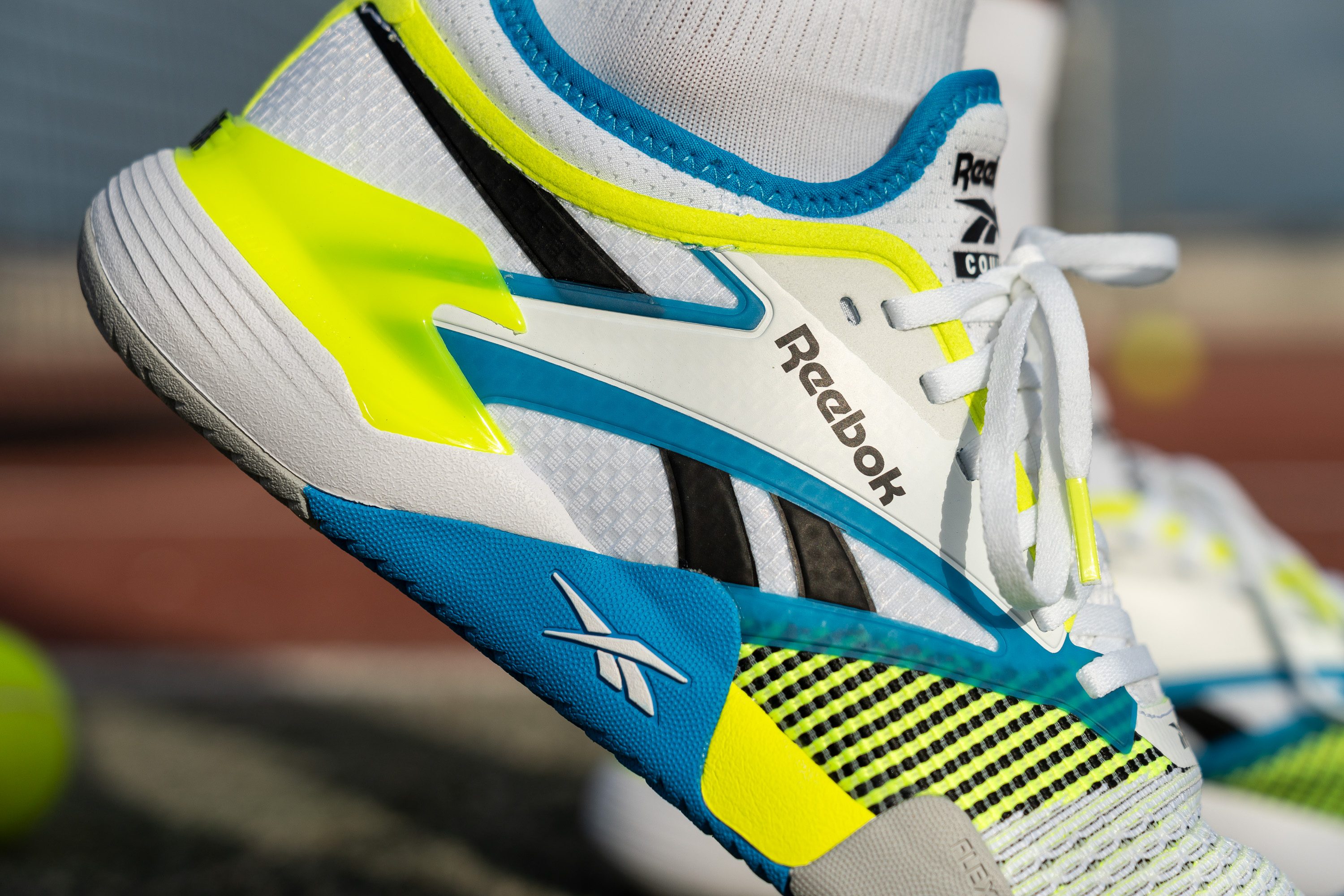
And we are happy to report that they all deliver as promised!
If only Reebok broadened the midsole of the Nano Court, it would've boosted the shoe's stability greatly but more on that below.
Torsional rigidity
We can clearly see how all of the shoe's components come into play together as we attempt to twist the Nano Court sideways.
There is hardly any give to the shoe and there is no movement in the heel and midfoot portion of the shoe. On the court, this means that your foot will not be rolling anywhere during forceful lateral shifts.
Thus, we confidently rated the torsional rigidity of this Reebok shoe with a high score of 4 out of 5.
| Nano Court | 4 |
| Average | 4.4 |
Heel counter stiffness
The heel hold of the Nano Court proved to be pretty strong too.
A stiff TPU heel clip around the base of the foot did an awesome job of preventing our heels from shifting and sliding during the playtest.
But the rest of the heel counter has some good structure to it as well! It earned a high stiffness score of 4 out of 5 in our manual test.
| Nano Court | 4 |
| Average | 4.1 |
Midsole width - forefoot
Flipping the Nano Court upside down, we immediately noticed its narrower midsole dimensions, especially in the midfoot.
Being used to wide lateral flanges on tennis shoes, we had to get used to the fact that there were no walls to fall back on in this Reebok shoe. In the widest part of the forefoot, our caliper showed 107.1 mm which is a few millimeters narrower than average.
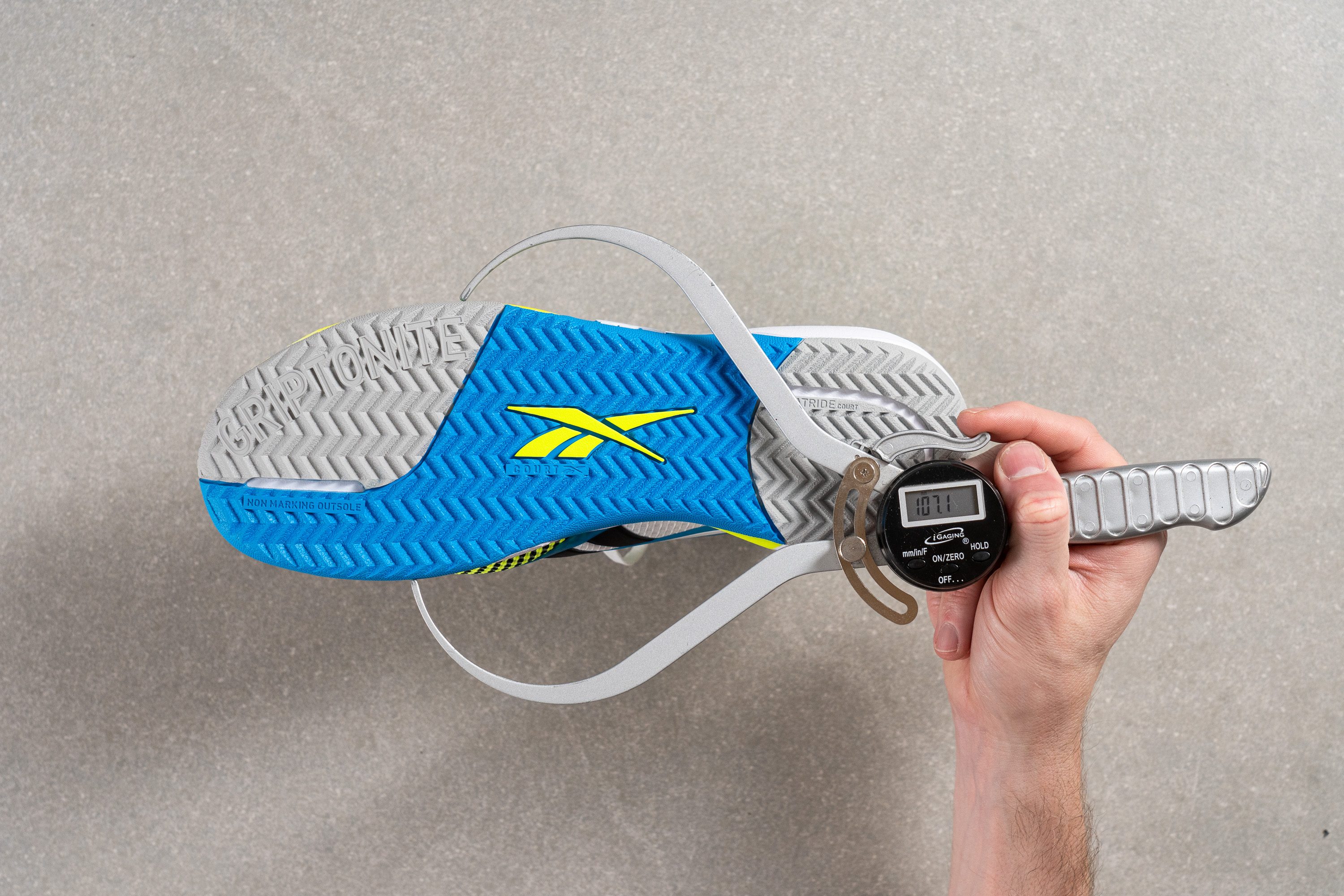
We wouldn't say that it is catastrophically narrow but players with wide feet and those who dominate the baseline are very to lack the width.
| Nano Court | 107.1 mm |
| Average | 111.9 mm |
Midsole width - heel
The shoe's midsole also proved to be narrower than average in the widest part of the heel. Our caliper returned 86.1 mm in this area.
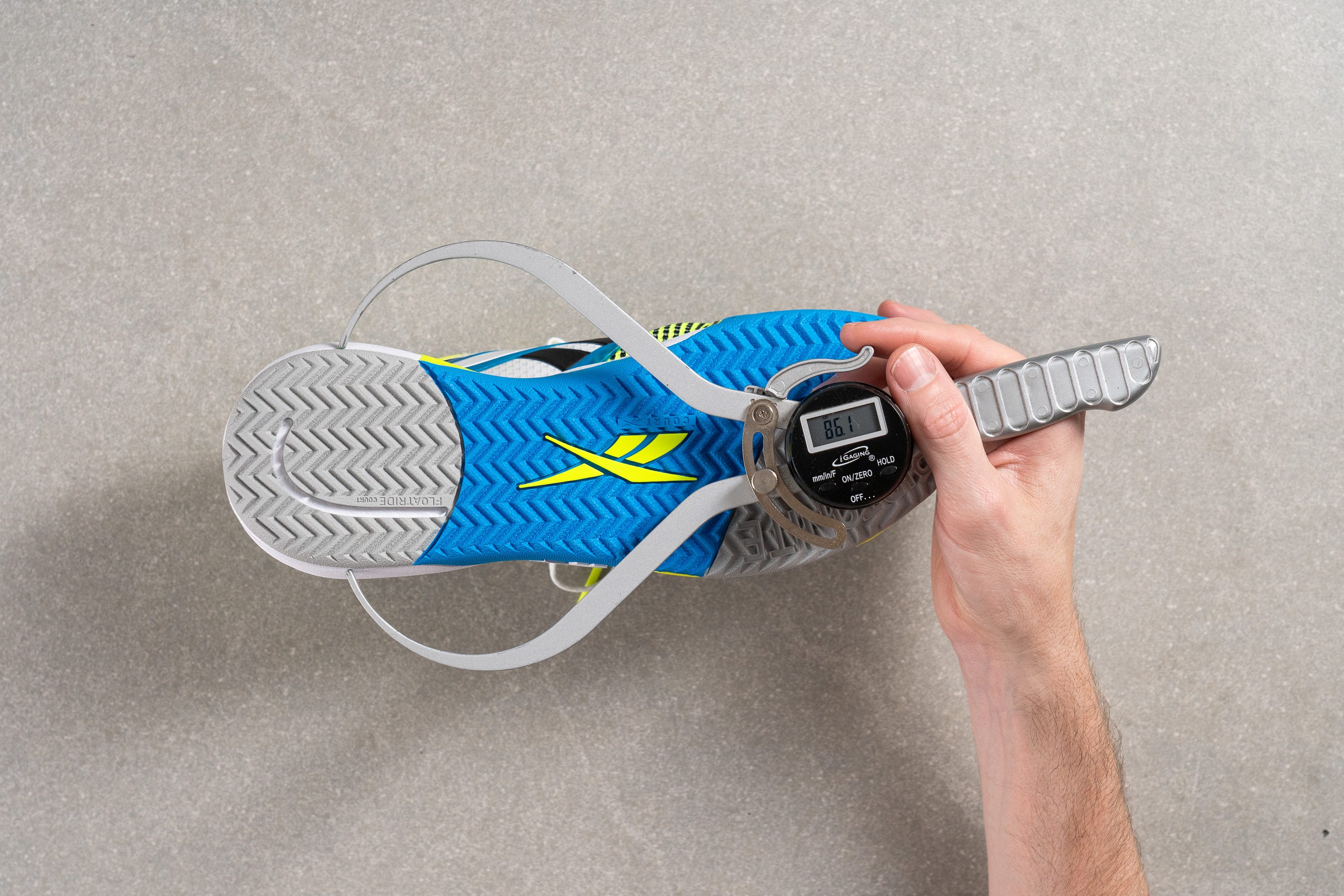
| Nano Court | 86.1 mm |
| Average | 89.6 mm |
Durability
Toe guard durability
To protect the integrity of the Nano Court during aggressive toe drags, Reebok added ToeTection rubber and a translucent TPU overlay on the lateral side of the shoe's toebox.

Applying sandpaper to the blue ToeTection rubber for 22 seconds at 10K RPM Dremel speed resulted in very moderate damage. Its incredible abrasion resistance made us feel confident when sliding during the playtest.
But here is the bad news - if you touch the court with the Flexweave part (even though it's covered in TPU), it won't be long before it gives up. You can see how brutal the damage is in this area compared to the ToeTection rubber.
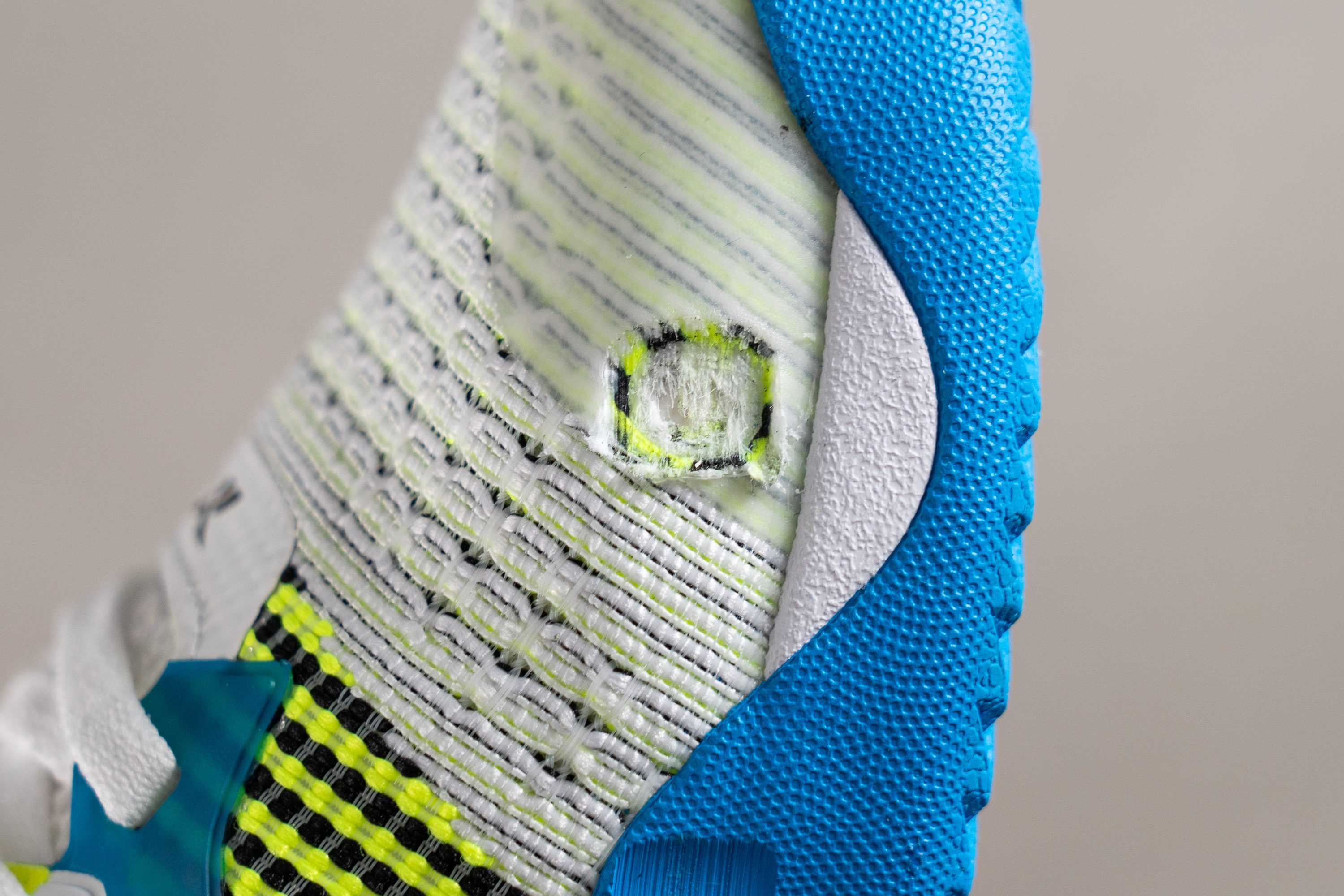
That's why we are lowering the Reebok Nano Court's toe guard durability score to 3 out of 5. It's nowhere near the protection offered by other tennis shoes in the same price range.
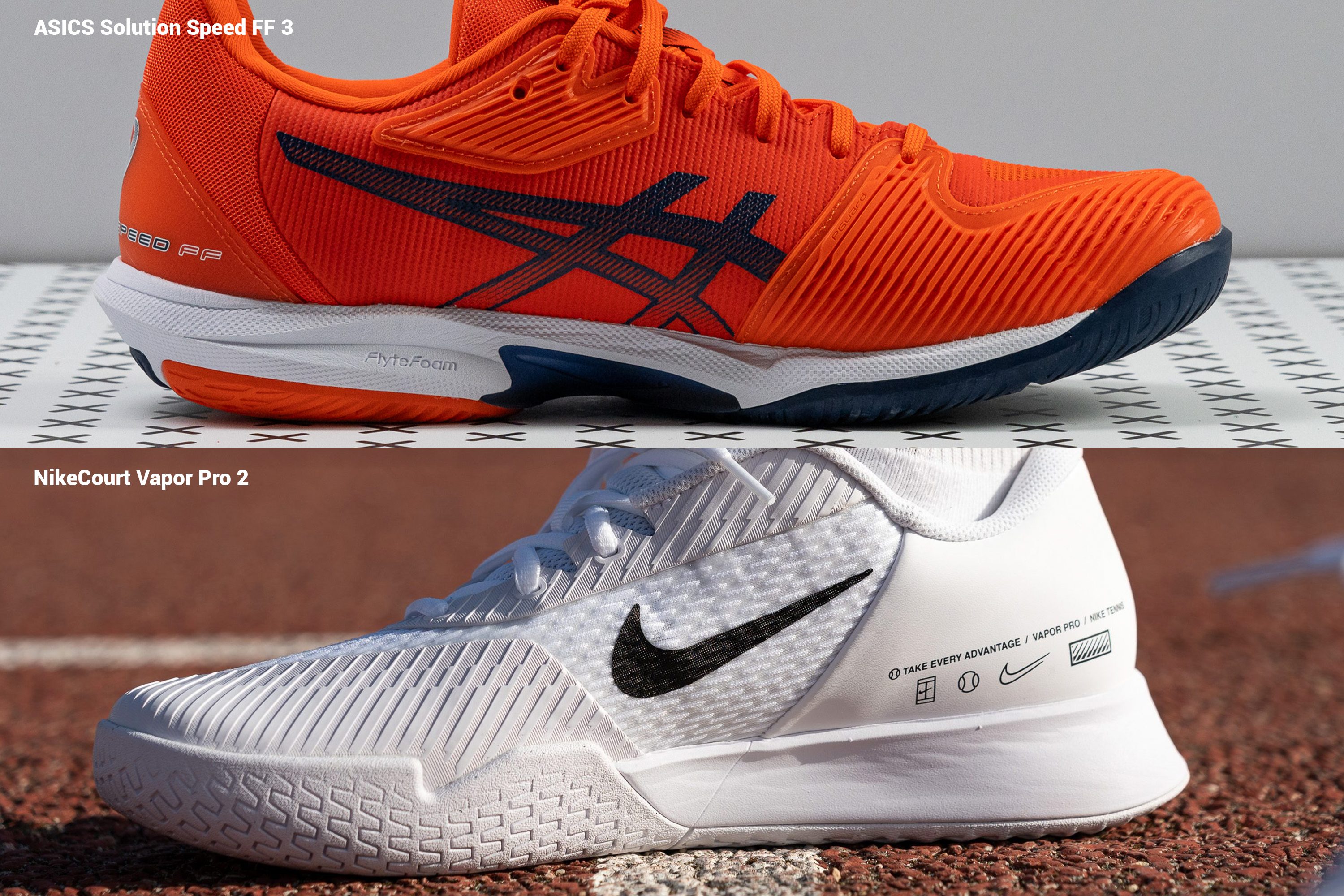
| Nano Court | 3 |
| Average | 3.3 |
Toebox durability
As you can see, the Flexweave does not bode well with aggressive brushes against rough surfaces like hard courts.
As our Dremel test shows, this woven textile simply lacks the necessary abrasion resistance to sustain that kind of damage in the long run.
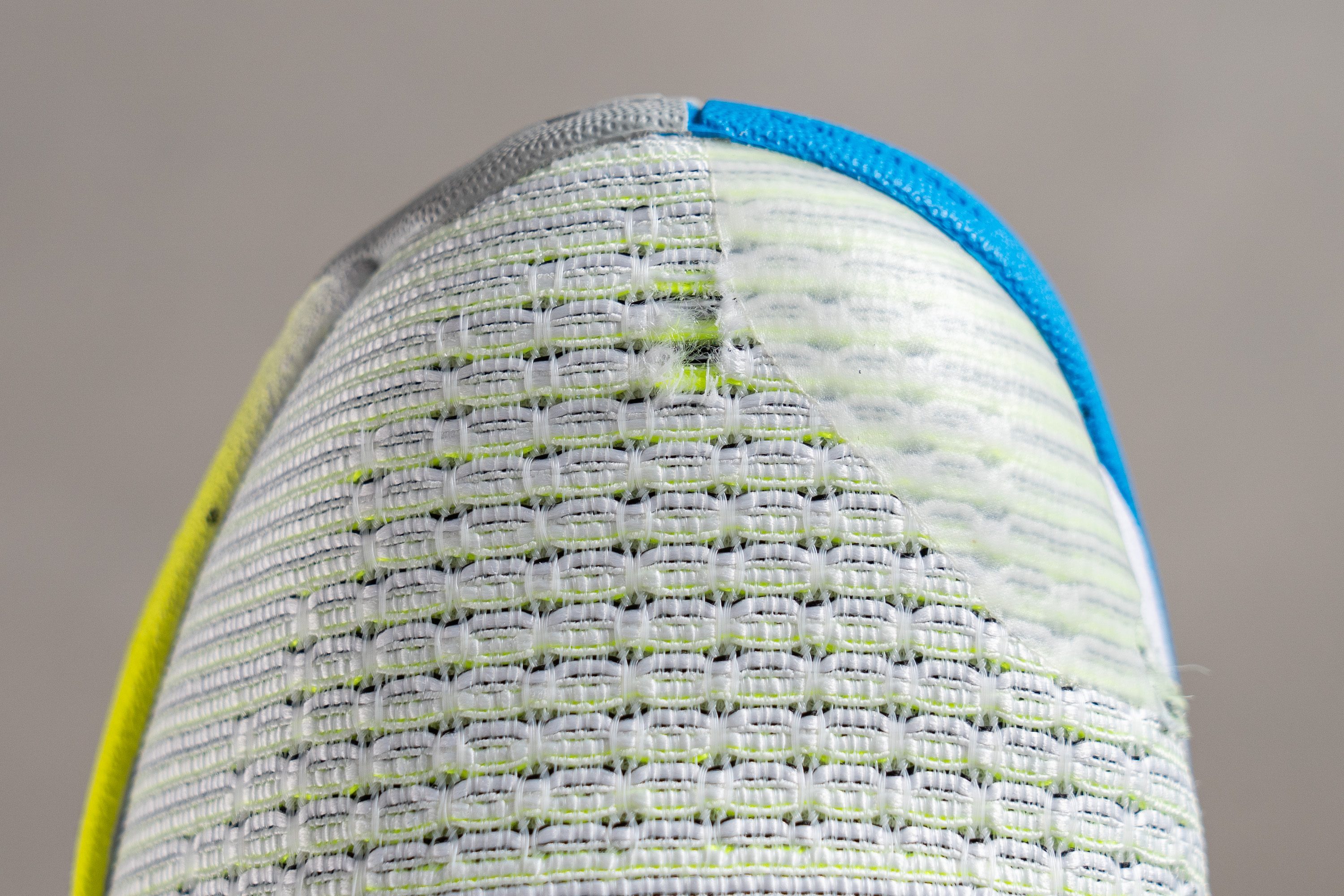
We are surprised that our 12-second sandpaper drill did not result in a see-through hole but based on the damage, it won't be long before that happens.
But because the material put up a fight, we didn't give it the lowest durability score. The Nano Court earned 3 out of 5 for toebox durability.
| Nano Court | 3 |
| Average | 3.7 |
Heel padding durability
On the bright side, we have no concerns about the inner lining of this Reebok shoe.
This neoprene-ish material stood strong against our sandpaper test showing nothing but a minor scuff.
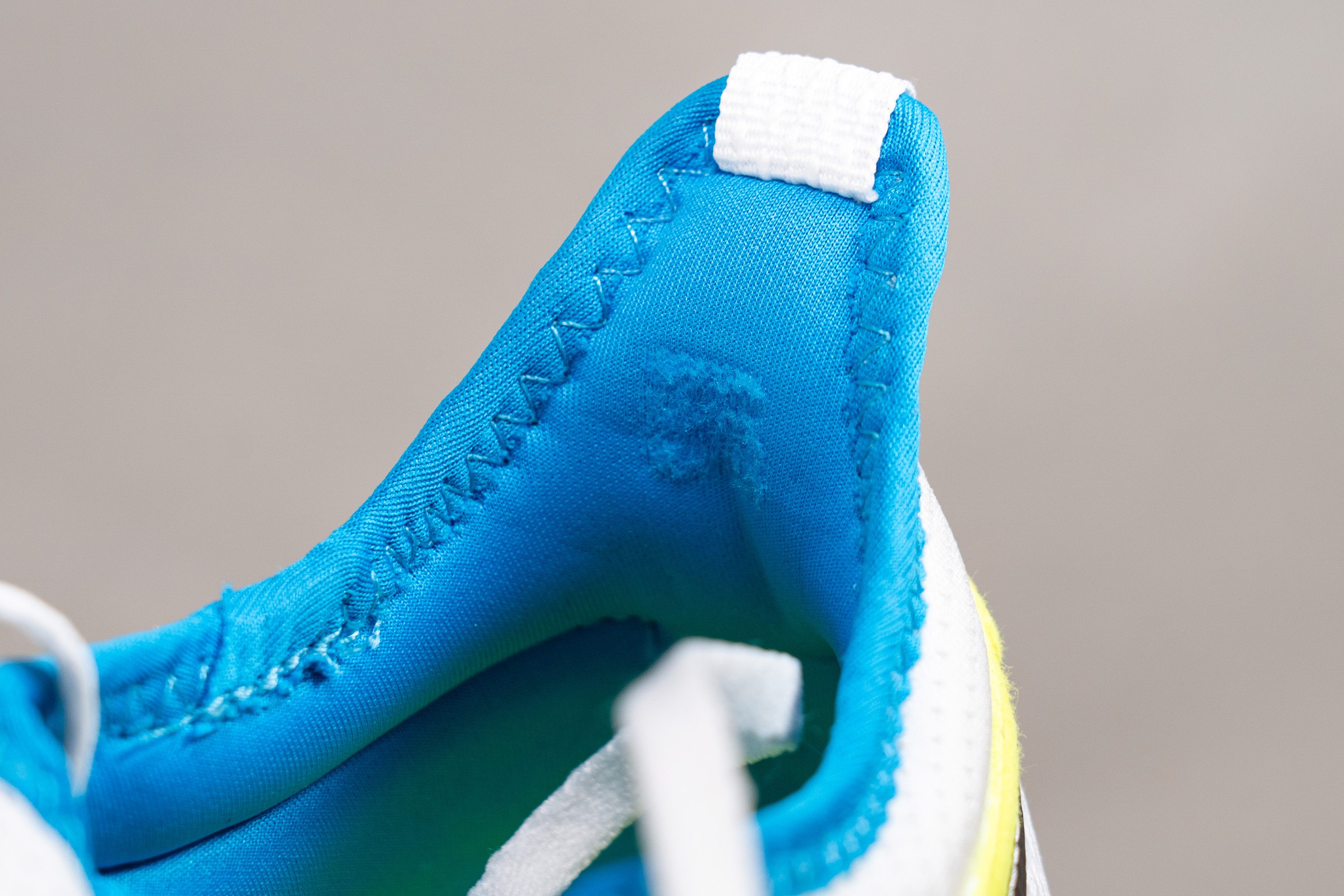
Confident in its ability to resist intensive friction, we rated its heel padding durability with a high score of 4 out of 5.
| Nano Court | 4 |
| Average | 3.3 |
Outsole hardness
We were very excited to see what kind of outsole Reebok had come up with for its first tennis shoe release in years. But to our dismay, it fell awfully short of durability...

First of all, we found that its rubber compound was a bit softer than what we normally see on tennis shoes. Our Shore C durometer returned 80.0 HC which is some of the lowest/softest readings we got in tennis shoes.
On the bright side, this softer rubber offered incredible grip but more on that later.
| Nano Court | 89.5 HC |
| Average | 86.0 HC |
Outsole durability
The moment our Dremel touched the rubber, we knew... It's going to drill the heck out of that outsole.
After 22 seconds of drilling, we saw that the tread pattern had completely smoothed out in that area! According to the tread gauge, the damage was as deep as 2.1 mm and that's the worst result we ever got in this durability test...
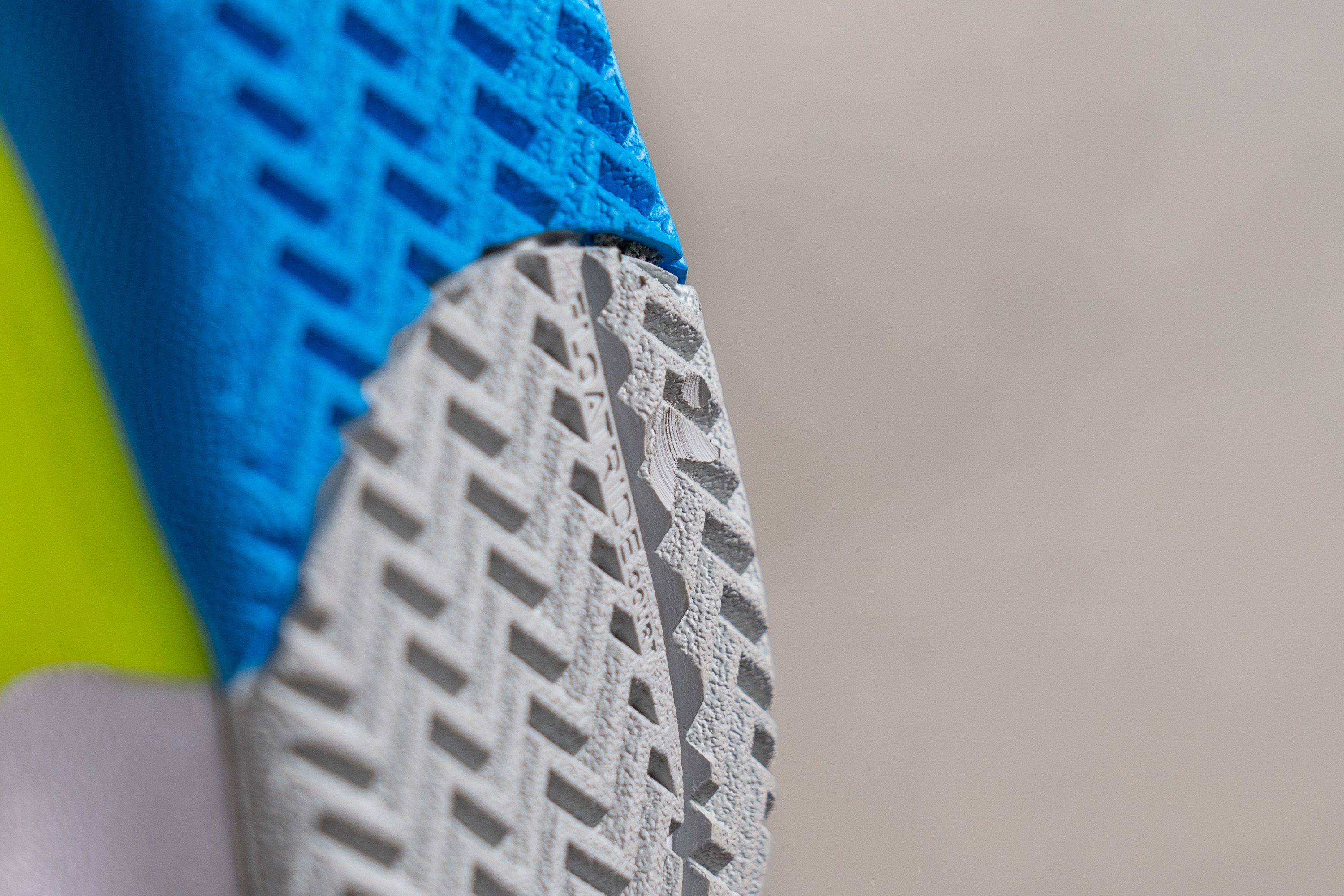
Yet another reason to NOT recommend the Reebok Nano Court for hard outdoor courts... If you want this shoe to last, we recommend limiting its use to indoor courts.
| Nano Court | 2.1 mm |
| Average | 0.8 mm |
Outsole thickness
Even though we measured the shoe's outsole thickness at 4.0 mm which is on par with the average tennis shoe, we don't think its lifespan is going to be the same. The abrasion resistance is just not strong enough.
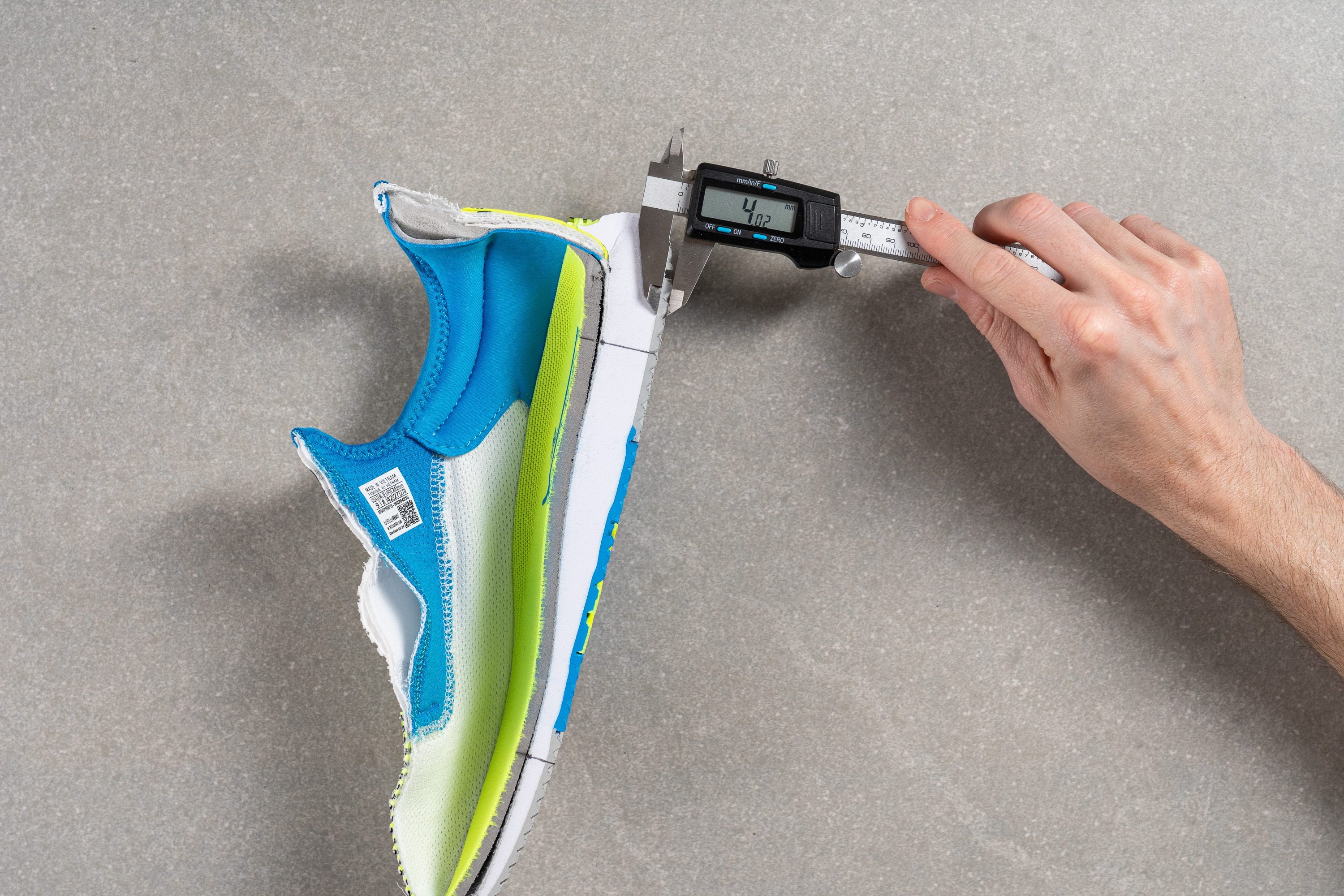
| Nano Court | 4.0 mm |
| Average | 4.2 mm |
Misc
Insole thickness
A generously padded insole plays a major role in the Nano Court's underfoot cushioning. At 7.1 mm, it takes up nearly a third of the shoe's heel stack!
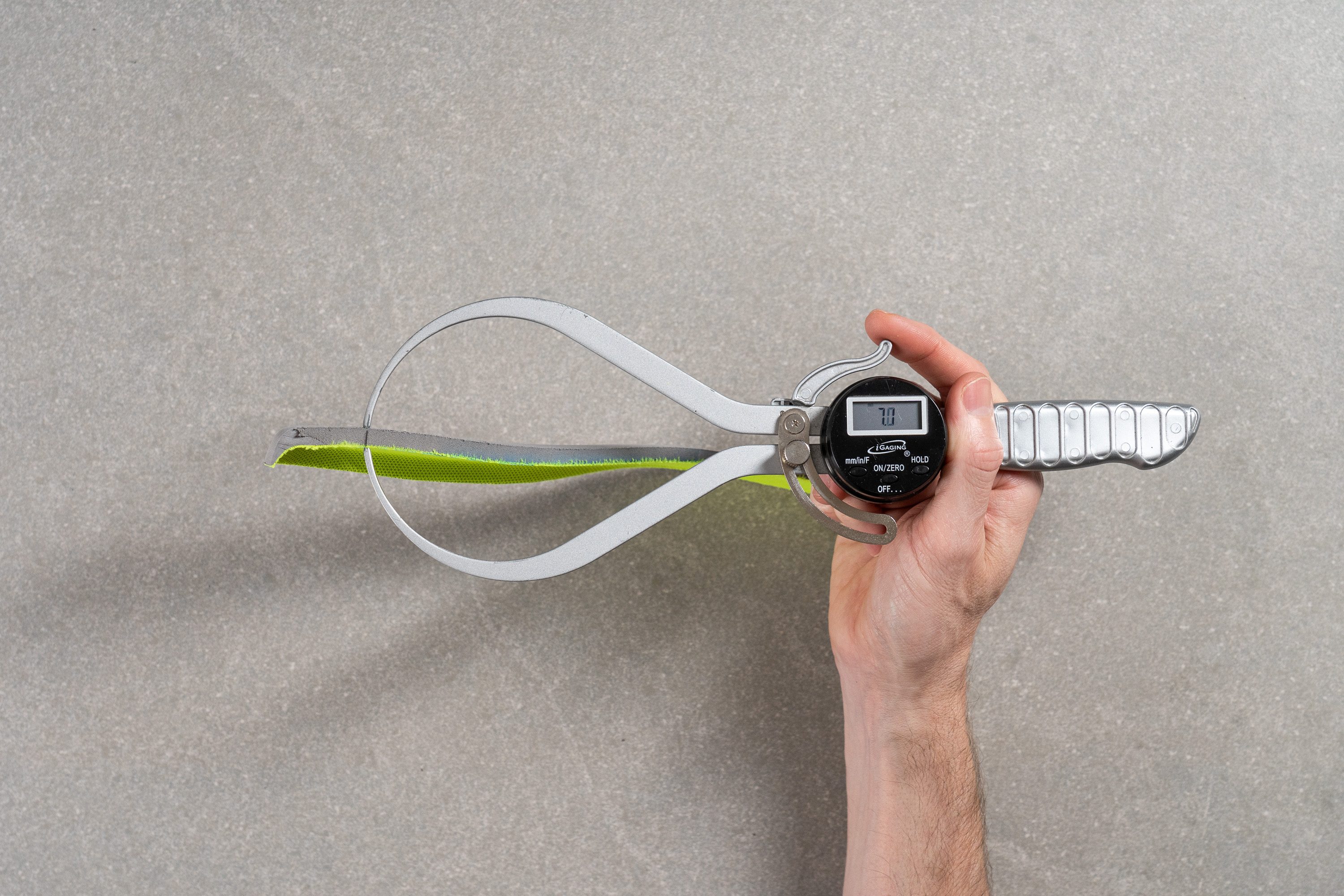
The insole has a molded shape with a raised arch which adds support in the midfoot.
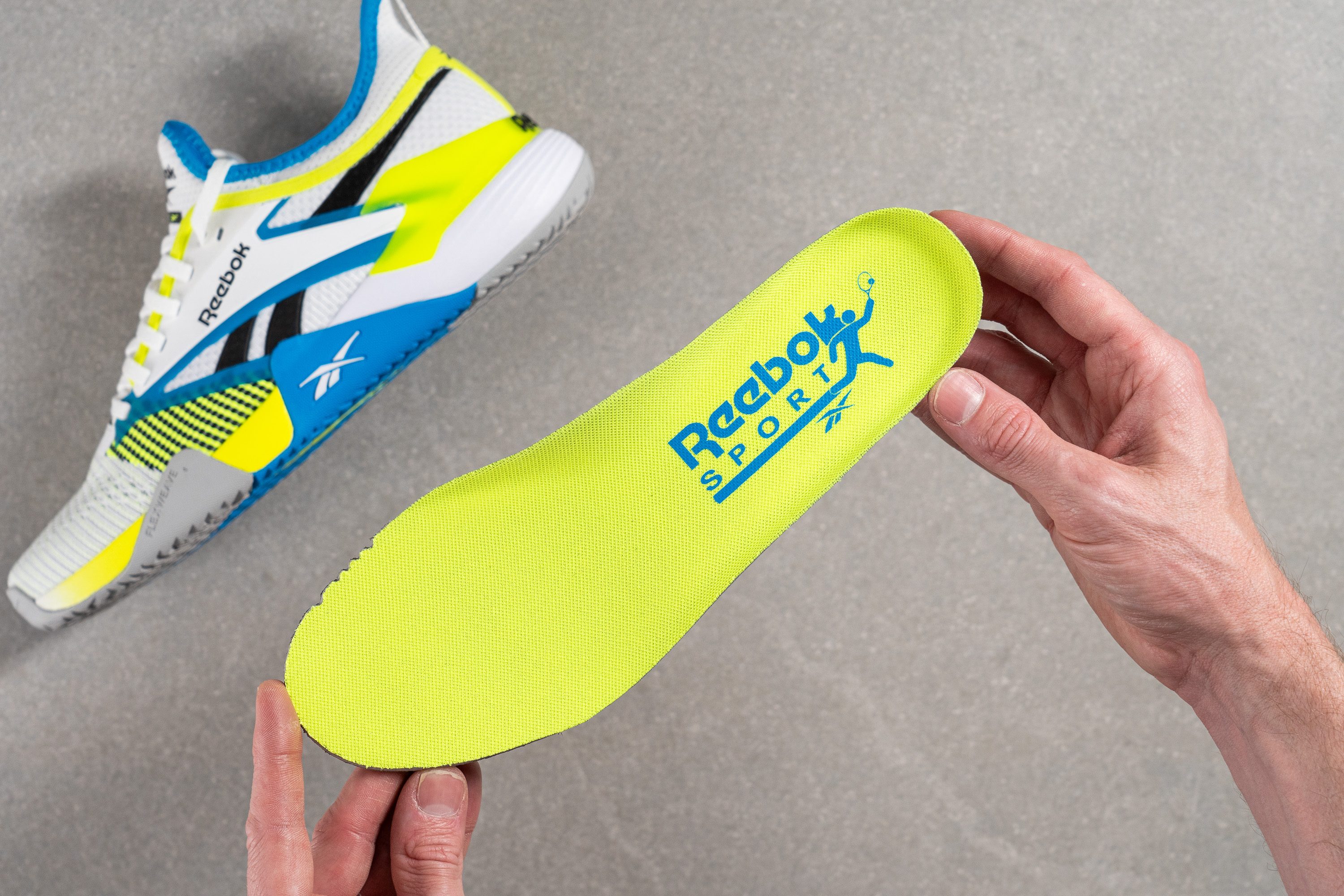
On the flip side, this is a WARNING sign for people with wide and flat feet. The arch can feel bumpy and take up space in the already snug-fitting bootie of the Nano Court.
| Nano Court | 7.1 mm |
| Average | 5.1 mm |
Removable insole
If you are not a fan of the shoe's molded insole or you prefer a custom pair of orthotics, the insole of this Reebok shoe is not glued and it's easy to remove.
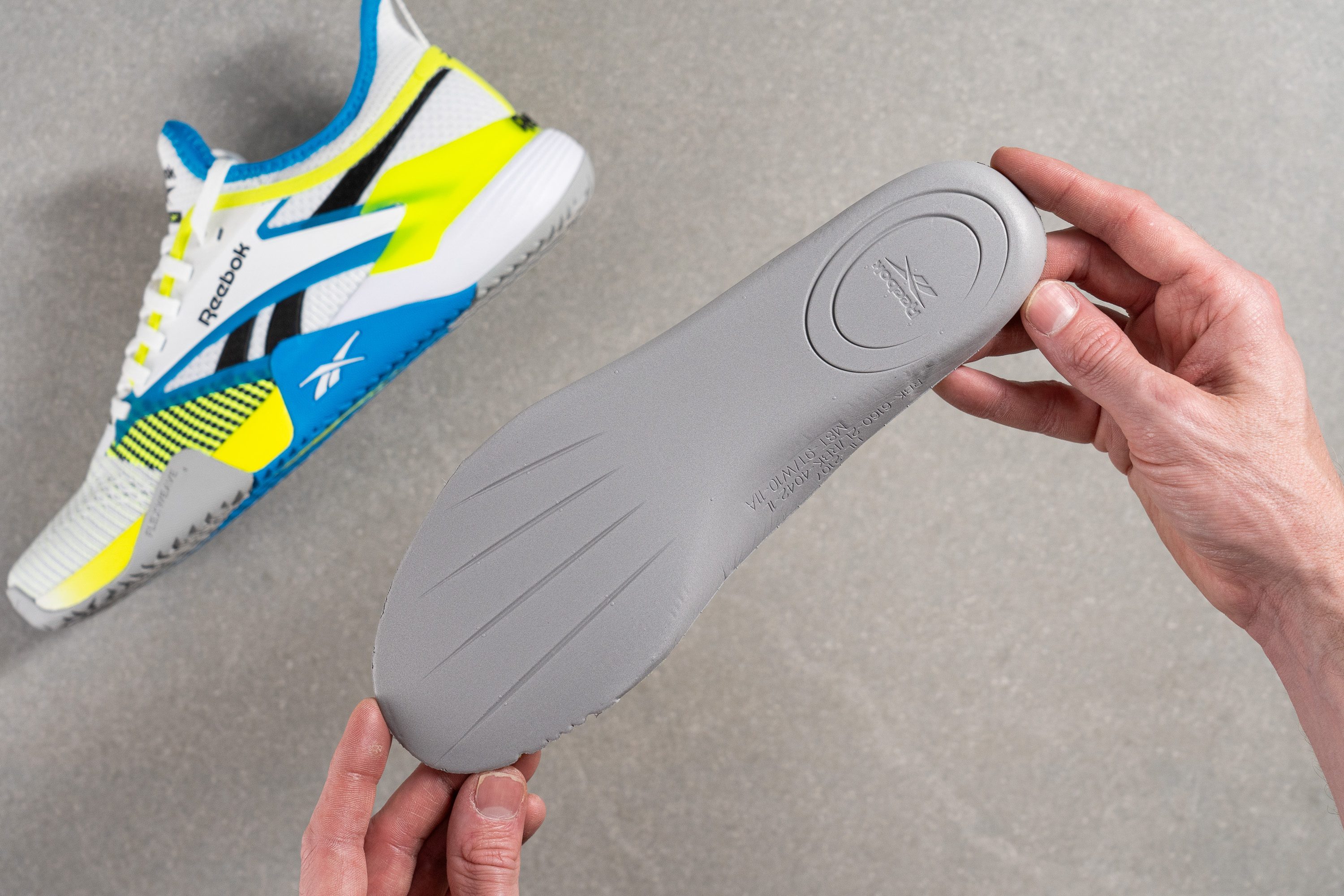
| Nano Court | Yes |
Tongue padding
The Reebok Nano Court is very lightly padded inside. Its tongue doesn't pack much foam showing only 6.0 mm of tongue thickness in our measurement.
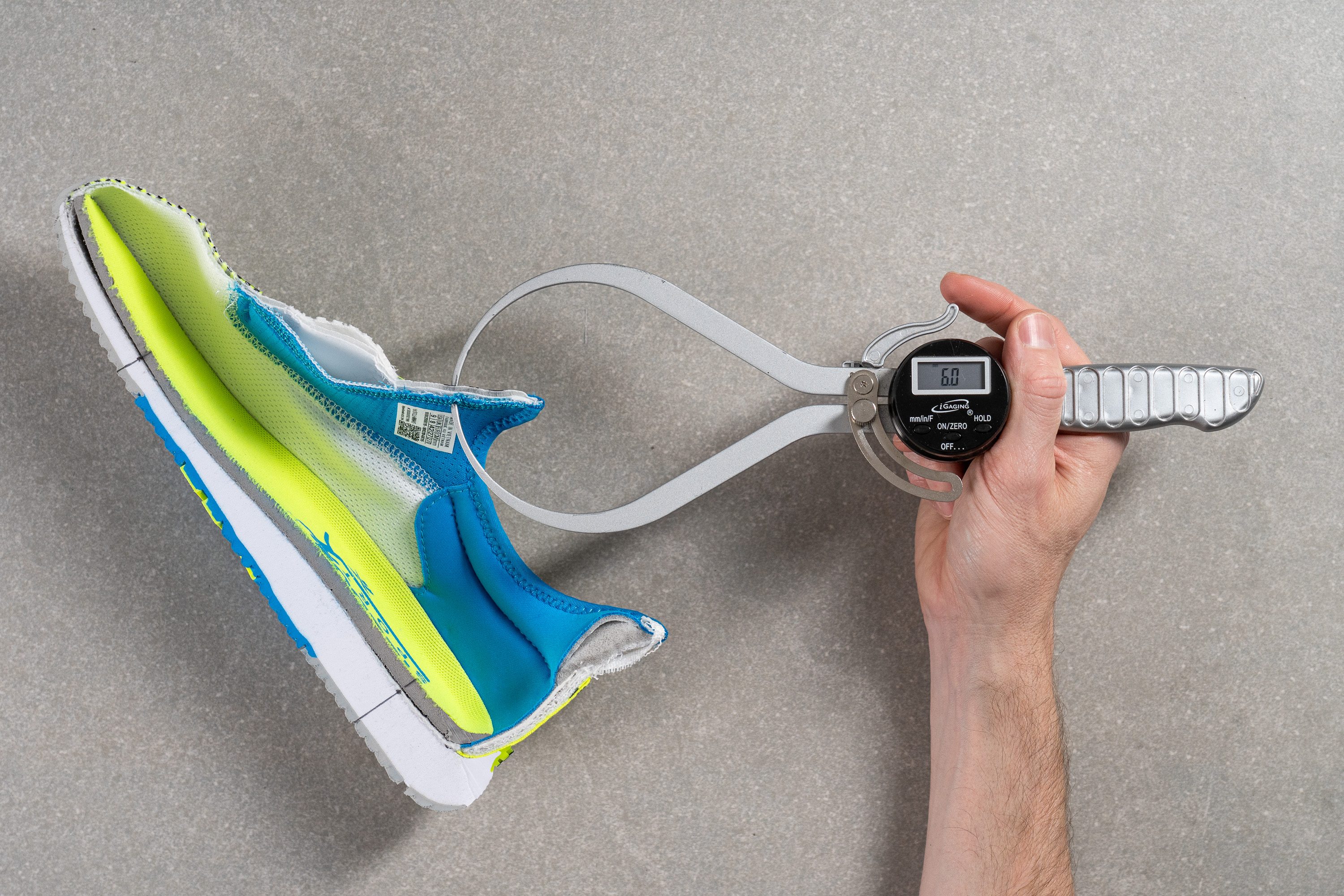
Because of that, this shoe doesn't feel very cozy but it does feel one-to-one with the foot.
| Nano Court | 6.0 mm |
| Average | 8.1 mm |
Tongue: gusset type
The shoe's locked-in bootie design is another problem for wide feet and high arches/insteps.

Its shoe mouth can only open this much and some folks would need to struggle their way inside the boot every time.
Sure, it's nice snug once it's on but the on-and-off process can be a deal-breaker for some people.
| Nano Court | Bootie |
Price
We agree that the below-average price is fair for this experimental tennis shoe from Reebok. But it is also fair that the shoe is not in the budget category considering the advanced materials used in it (Flexweave, Floatride, etc.).
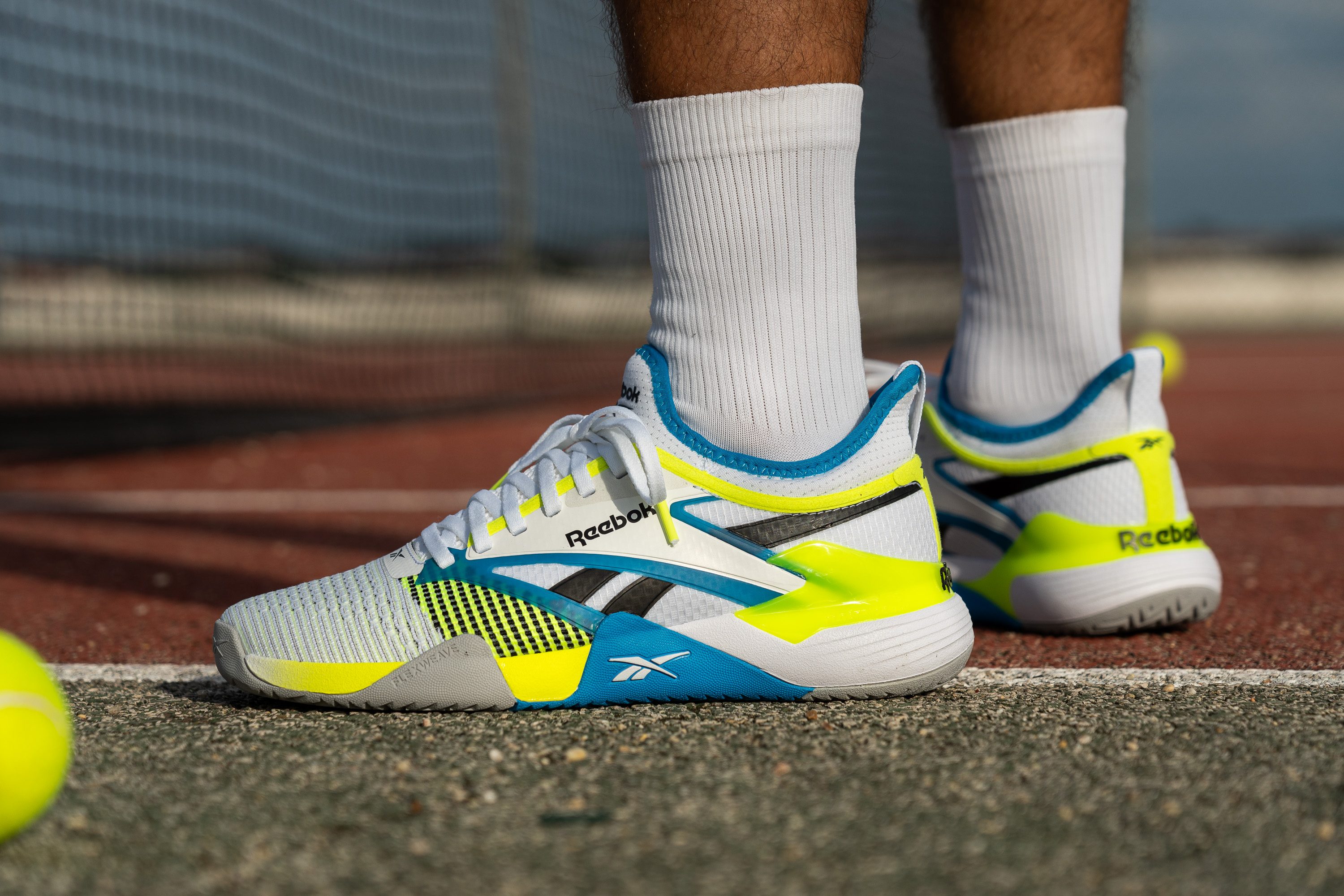
But if you hope to draw the best value for money from the Reebok Nano Court, you have to make sure that none of its flaws turn become a deal-breaker for you (see Who should NOT buy).
| Nano Court | $120 |
| Average | $132 |
Heel tab
A large finger loop is there to help you get the Nano Court on a bit faster.
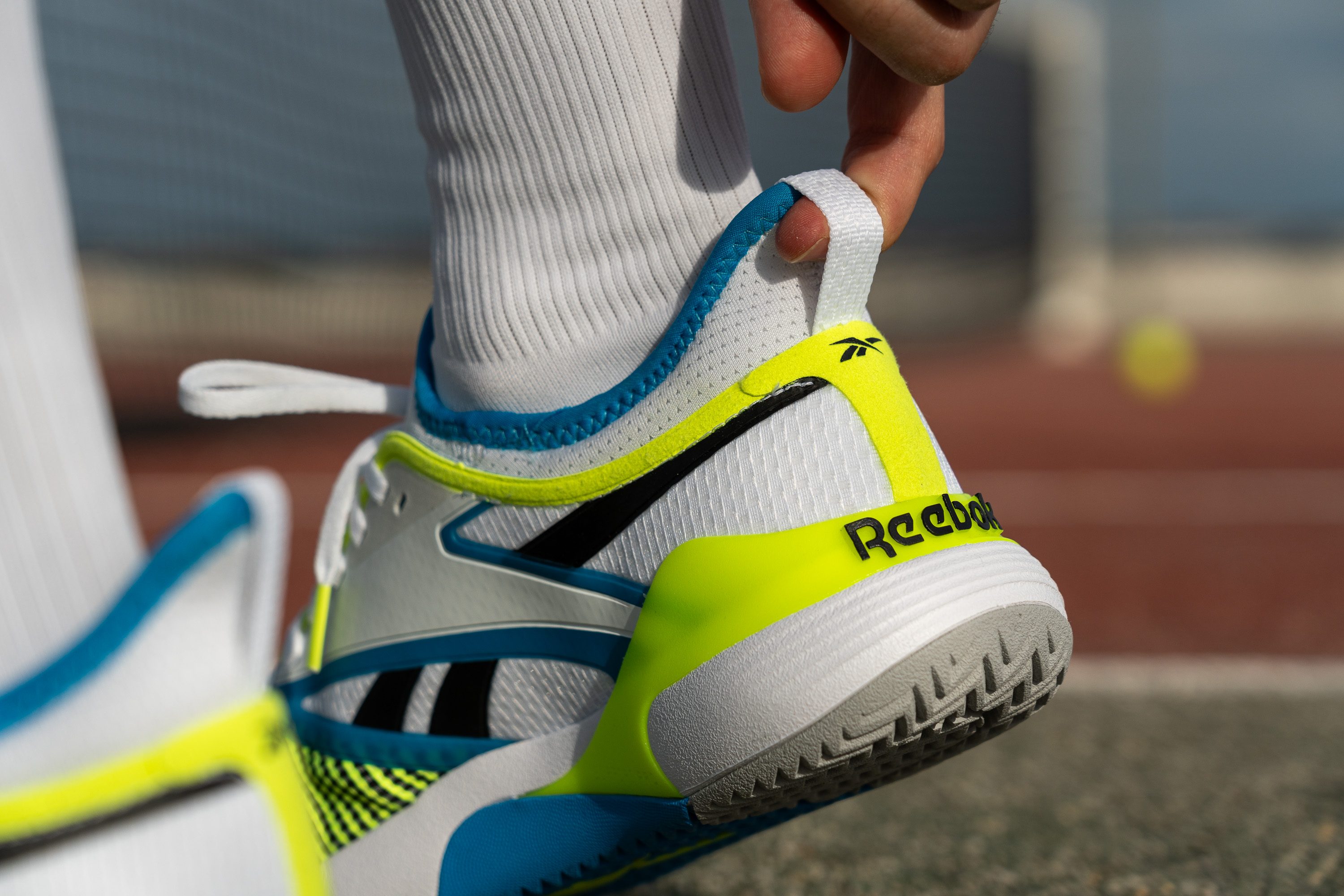
| Nano Court | Finger loop |

